16 Rare Condos With Unique Conserved Buildings In CCR
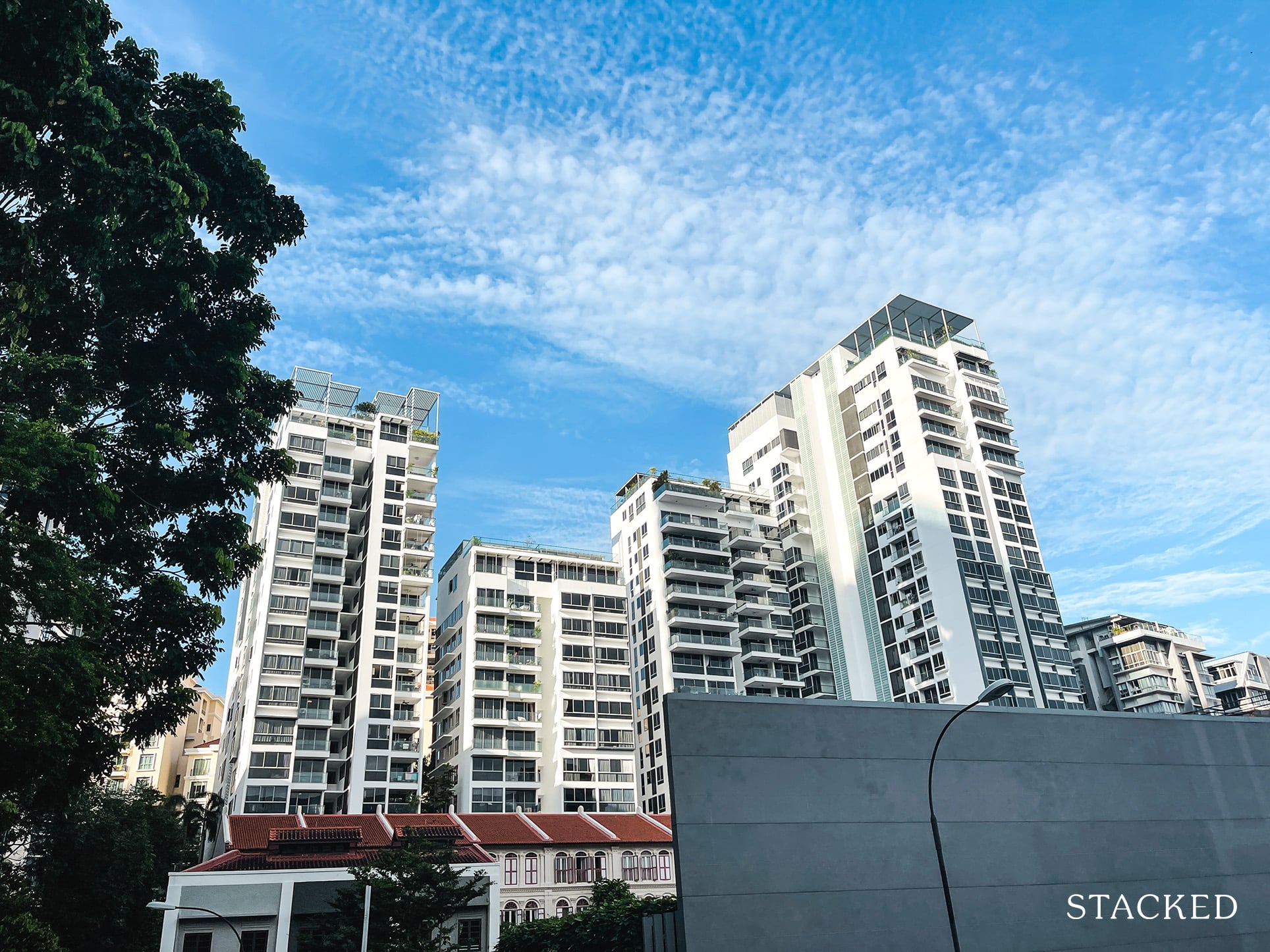
Get The Property Insights Serious Buyers Read First: Join 50,000+ readers who rely on our weekly breakdowns of Singapore’s property market.
Matt read Law in university but has since traded legal statutes for the world of high finance on weekdays. On weekends, he delves into his keen interest in real estate, which has taken him to more 150 new and resale developments since the age of 16. Since first writing for Stacked, Matt has made his first home purchase and continues to appreciate the evolving trends of today's market. In his free time, Matt goes on walks and writes about (more) real estate on his personal Instagram page @propertyzaikia
If you visited the Botanic Gardens recently, you might have noticed the beautifully restored Atbara (1898) and Inverturret (1906) bungalows at the Gallop Road extension. I’m so glad that after being in a state of disrepair for many years, NParks and SLA finally decided on restoring these 2 bungalows that have often been associated as the oldest black and white bungalows in Singapore, albeit mistakenly as pointed out by the Straits Times.
One cannot deny that there’s a certain charm and mystique that comes with these conserved buildings. Having reviewed Riviere recently, a project comprising 3 conserved warehouses dating back to 1919, it got me thinking about how many private condominiums/apartments actually incorporate conserved buildings in them. After all, combining the heritage of a conserved building with the modern facilities of a condo sounds like a union made in heaven.
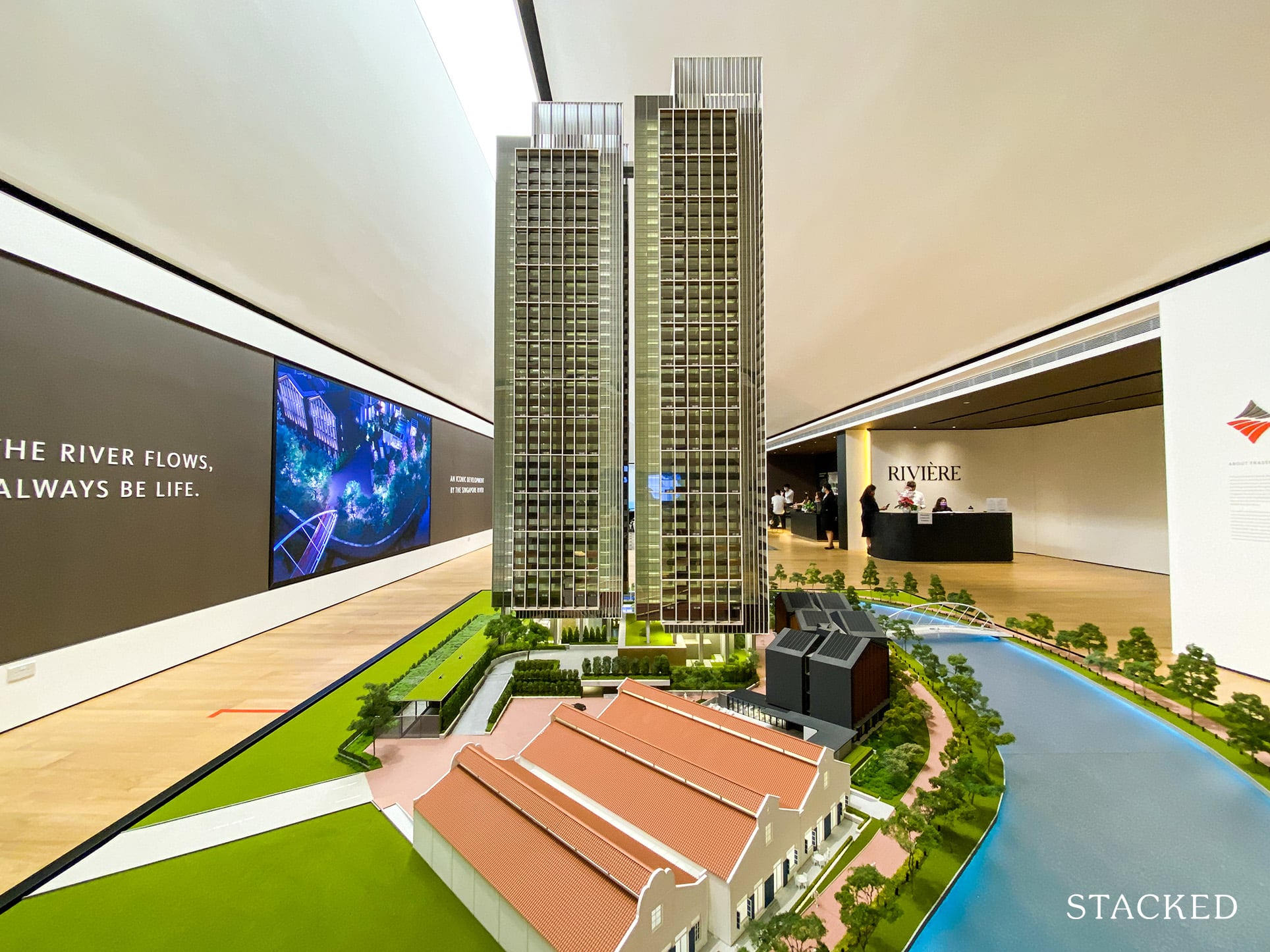
The conserved buildings in these developments below take on many shapes and forms. They range from old colonial bungalows, shophouses, warehouses, and even former SIT (HDB’s predecessor) flats. Their uses also differ and vary from being the clubhouse, residential units, commercial units, or simply an entrance to the condo.
This is such an unexplored topic in Singapore so I hope you are as intrigued as I am in discovering all of them. I have split them according to districts and will share more about the development’s details (number of units, average psf etc) and the conserved building within them. The fun part will be knowing more about the history and architecture behind these conserved elements so I will be supplementing that wherever possible.
As this has been quite a mammoth research project (I hope I made my Law university professors proud), this will be a 2-part series – this being the 1st, and will focus on 16 condos in the Core Central Region with conserved buildings and include developments in Districts 1, 6, 7, 9, 10 and 11.
The 2nd part will focus on another 16 condos in the Rest of Central Region and Outside Central Region, where many condos with conserved buildings will be concentrated in District 15, which is unsurprising given the rich cultural heritage in Katong.
The caveat is that as much as I tried to make this list as extensive as possible, there currently isn’t an official compilation of all private developments with conserved buildings within them. If you are aware of any other developments or know more details about the conserved buildings in this list, please leave us a comment below and I’ll be happy to include them in!
Let’s get started!
District 1
Emerald Garden

Address: 31 & 33 Club Street
Closest MRT: Telok Ayer (280m, 4 mins walk)
Tenure / TOP: 999 Years / 1998
Number of units: 265
Average PSF: $2,042
Conserved Element / Usage: Shophouse / Entrance & Commercial
Description:
There isn’t much information about this specific conserved building here at Emerald Garden, even by its builders Lum Chang. For many years, this condo has been under the radar, despite its prime location, full condo facilities, and near Freehold tenure.
Interestingly, this conserved building was only retained as the entrance to the condo (with commercial shops above) but one will not miss its elaborate structure and details, making some conclude that it could possibly be an association building in its previous life.
Emerald Garden’s location along Club Street gives us a clue to its beginnings. It is said that the road name’s origins came from the various Chinese clubs that used to be located here. They included the Chinese Weekly Entertainment Club, Chui Lan Teng Club, and Ee Hoe Hean Club, all of which were preeminent clubs that played host to many wealthy Chinese businessmen in their heyday. The most prestigious of them was said to be the Chinese Weekly Entertainment Club, which reportedly only admitted English-educated Straits Chinese elites. Its members were rumoured to include Sir Song Ong Siang, Dr Lim Boon Keng, Aw Boon Haw, and the list goes on.
Club Street was also said to be a predominantly Hokkien area, although the Cantonese Yeung Ching School (Yangzheng Primary School today) was also located here and was where my father took evening classes in Chinese back in the 1960s.
In fact, the residential blocks of Emerald Garden stood where the old Yeung Ching School used to be, and what’s left of the school are its steps. You can find the steps with a write-up of the school’s history at the small cul-de-sac opposite the Chinese Weekly Entertainment Club at 76 Club Street.
Today, Club Street and its surrounding Ann Siang Hill and Amoy Street have evolved into a hip precinct popular for its diverse dining options and nightlife entertainment. Emerald Garden is certainly one very unique residential development in this trendy neighbourhood.
District 6
Eden Residence Capitol
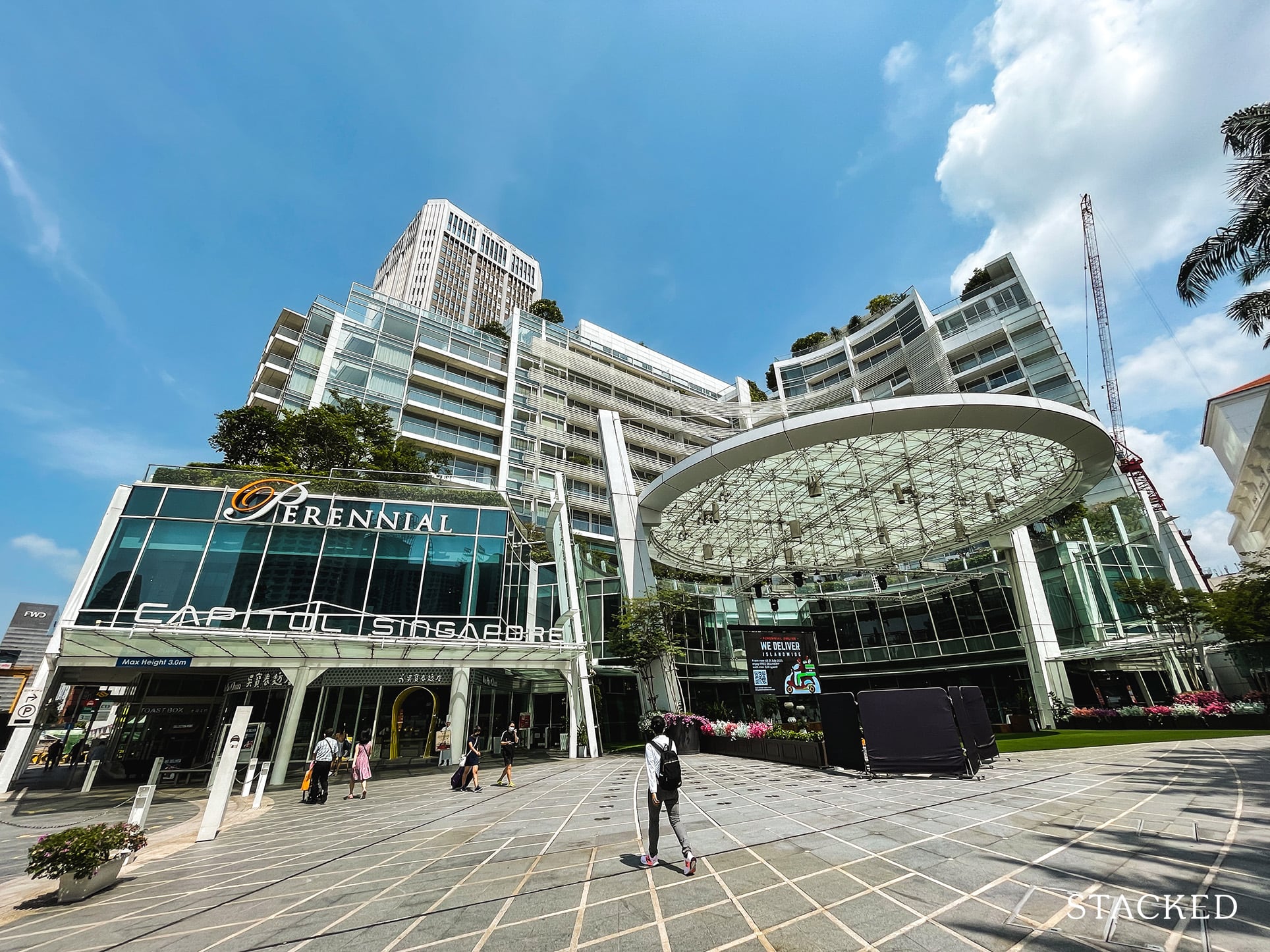
Address: 11 Stamford Road
Closest MRT: City Hall (50m, 1 min walk)
Tenure / TOP: 99 Years from 2011 / 2015
Number of units: 39
Average PSF: $3,020
Conserved Element / Usage: Theatre & Shopping Centre / Theatre, Hotel & Commercial
Description:
Eden Residences Capitol currently holds the honour of being the only residential development in District 6. That exclusive crown will be lost once Canninghill Piers (former Liang Court) is launched later this year. Regardless, Eden Residences Capitol is a luxury development and its average psf is the 2nd highest on this CCR list all thanks to its direct connection to City Hall MRT, one of the most central locations you can find in Singapore.
Eden Residences Capitol is part of a wider integrated development that comprises 3 iconic and conserved buildings – Stamford House, Capitol Building, and Capitol Theatre. They have now been beautifully restored into a retail podium (Arcade@The Capitol Kempinski), Capitol Theatre (retained its name), and a luxury hotel (The Capitol Kempinski Hotel Singapore).
Going back its history, the old Capitol Theatre and its adjoining Capital Building were commissioned by the Namazies, a family of Persian descent who were businessmen, political leaders, and lawyers. The law firm Mallal & Namazie exists to this day and is now managed by Mirza Namazie, son of MJ Namazie. They also nurtured famous lawyers such as Justices Choor Singh, F A Chua, and TT Rajah, who went on to found Rajah & Tann.
Capitol Theatre and Building (formerly called Namazie Mansions) were constructed in 1929 and 1930 respectively and were designed in Neo-Classical style by British architects Keys and Dowdeswell. They were said to have taken reference from the Roxy Theatre in New York.
Capitol Theatre featured an Art Deco entrance that screamed “Capitol”, a feature which has been conserved and restored till today. With reference to URA’s detailed writeup, this feature rests on a base in the form of a cantilevered curved canopy spreading outwards to welcome theatre patrons. NLB gave a very detailed rundown of the theatre’s beginnings and operations here as well.
Meanwhile, the Capitol Building spotted a distinctive curved corner fronting what is today Raffles City Shopping Centre. It “boasts of a concave façade featuring a convex portico at the forefront with giant billboards used to be emblazoned across the façade of this prominent corner, easily attracting the attention of passers-by”. This definitely ranks as one of the most recognisable corners among Singaporeans and I’m very pleased with the conservation efforts to restore it to its original facade.
Finally, Stamford House (originally known as Oranje Building) was actually the oldest building of the 3, having been built in 1904 by famed architect RAJ Bidwell of Swan & Maclaren, who also designed the Raffles Hotel, Goodwood Park Hotel, and Victoria Concert Hall. This was done in a variation of the Venetian Renaissance style.
Taking reference from URA, Stamford House has refined and ornate architectural detailing throughout the building. They include Classical components such as keystone arches, Venetian windows, elaborate roof balustrade, and fancy entablature, adding to the grandeur of the building. Aptly, this architectural masterpiece is today home to Swiss luxury hotel chain Kempinski’s first hotel in Singapore, The Capitol Kempinski Hotel.
District 7
South Beach Residences
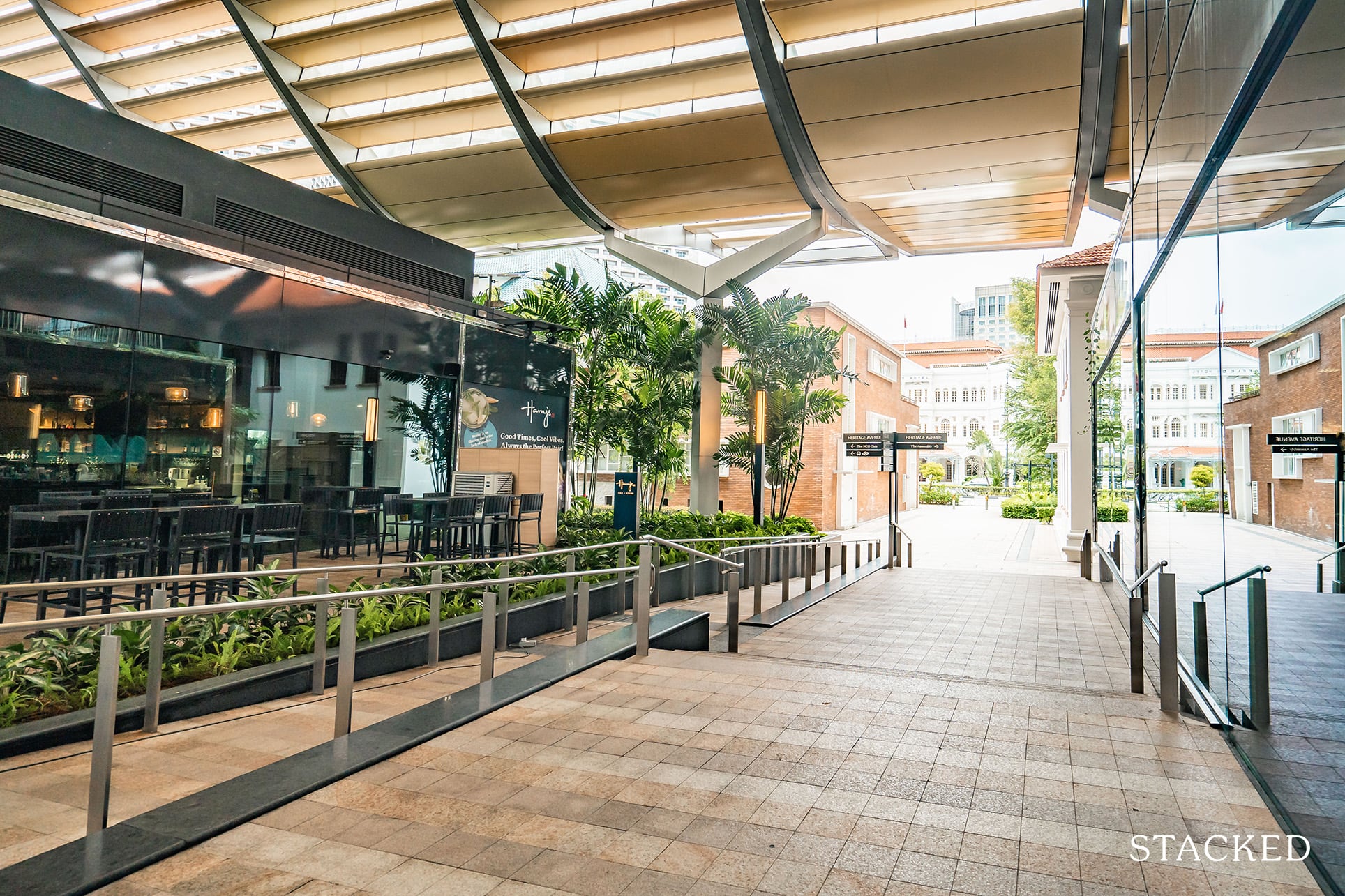
Address: 30 Beach Road
Closest MRT: Esplanade (160m, 2 mins walk)
Tenure / TOP: 99 Years from 2007 / 2016
Number of units: 190
Average PSF: $3,437
Conserved Element / Usage: Army Camp Buildings / Commercial & Hospitality
Description:
South Beach Residences is the most expensive development on this CCR list, despite its 99-year leasehold tenure. You won’t miss this from a distance and its modern architecture is by the award-winning Fosters + Partners. Direct access to Esplanade MRT and sweeping views of the Singapore skyline make South Beach Residences an aspiration for many.
More than just its residences, South Beach is part of a wider integrated development (trend these days as you probably already know) that includes an office tower (South Beach Tower), retail (South Beach Avenue), and hotel (JW Marriott). We gave the residential development a thorough review here.
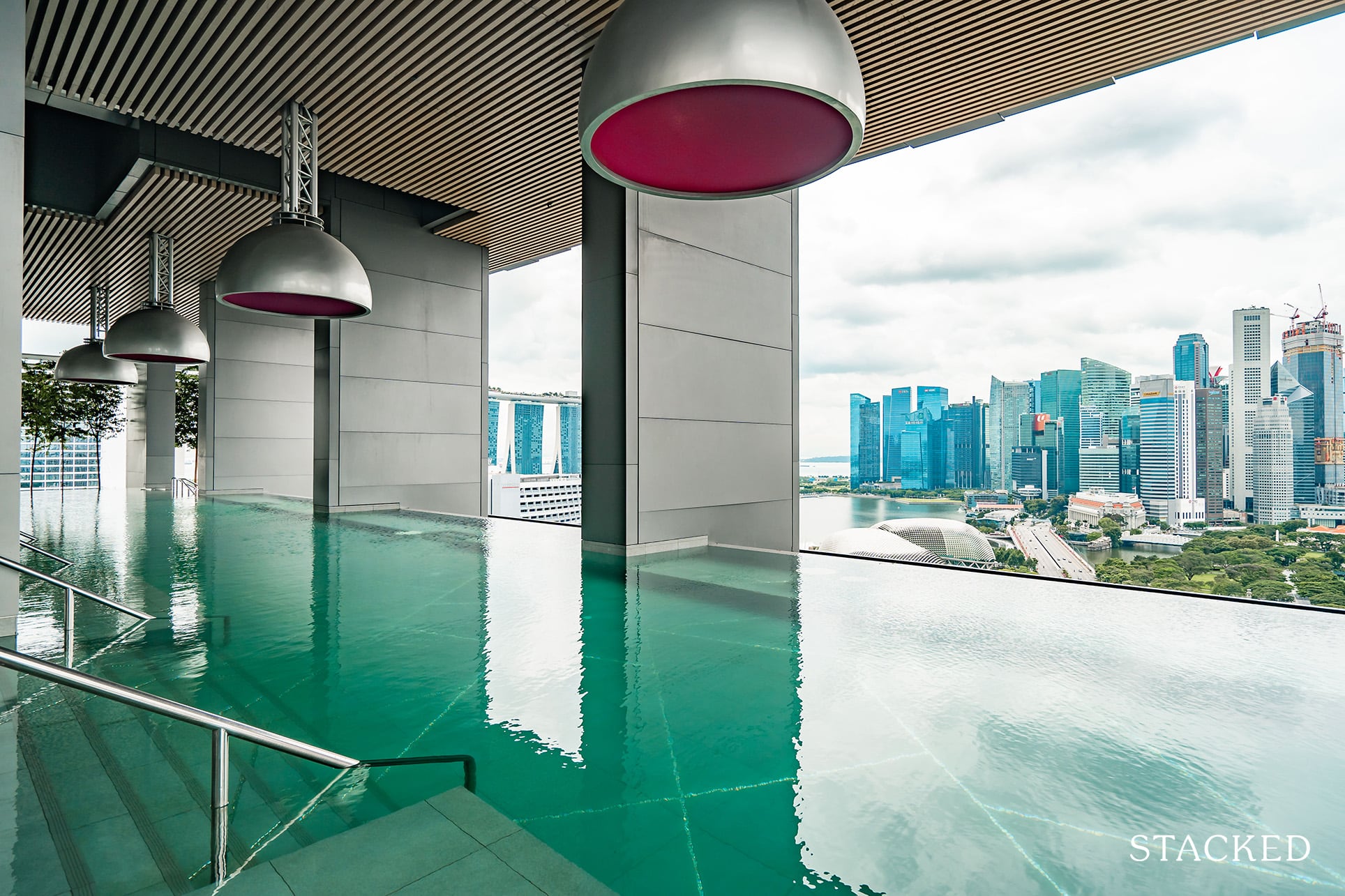
Condo ReviewsSouth Beach Residences Review: Great Location And Ultimate Views
by Reuben DhanarajThe point of this article is of course to share more about the conservation buildings at South Beach. There are a grand total of 4 conserved buildings here, probably the most in a single development to my knowledge. They are Blocks 1, 9, and 14 of the former Beach Road Army Camp and the NCO (Non-Commissioned Officers) Club, which was famous for its Olympic-sized pool.
Beach Road Camp was built in the 1930s in a hybrid of Art Deco and Neo-Classical styles and served as the headquarters of the Singapore Volunteer Corps at the beginning. After WW2, Beach Road Camp played host to the first batch of National Servicemen in 1967 and the first batch of SAFTI officers. It is widely regarded as the birthplace of the Singapore Armed Forces.
Block 1 is the oldest of the 4 buildings and was once the armoury for Beach Road Camp. It features a “unique triple-arched entrance, circular fanlights and timber louvered windows that are unique with their asymmetrical façade design”. The asymmetry is said to be caused by the amalgamation of 2 buildings into 1 through the construction of the central archway to unify both buildings. Today, it is home to 2 F&B joints, Vatos Urban Tacos and The Armoury.
Block 9 was built in 1933 by architect Frank Dorrington Ward, who was also behind the design of Clifford Pier. The building was made of brick and reinforced concrete which made it innovative in its day, in particular, the use of curved reinforced concrete arches in the double-height hall, which was to ensure optimal ventilation – don’t forget, air conditioning was not prevalent then and these are soldiers we are talking about. While it served as a drill hall on most days, Block 9 also played host to the military’s social functions. Home & Decor also did a great write-up on what is today JW Mariott’s Grand Ballroom. The next time you attend a wedding there, do remember to ponder about its history.
Block 14 was formerly the quarters for the Malay companies of the Singapore Volunteer Corps before serving as the HQ for the People’s Defence Force (PDF). Today, it serves as a drop-off point for JW Marriott and also has meeting rooms named after military-inspired names such as Alpha, Charlie, Echo, Golf and the list goes on. I’m not sure how appropriate it is given the nightmares that may have transpired in it but the former SAF Court Martial Centre here is now a bar called the Court Martial Bar under JW Marriott.
Finally, the NCO Club was constructed in 1952 by P&T Architects, who were behind many iconic buildings back in the 1900s. Today, P&T is more known for its mass-market condos such as those at One-North Eden and Forrett at Bukit Timah. The architecture style is a “mix of Art Deco and Modern Style with thorough use of terracotta wall tiles that simulate fair-faced brickwork, while the windows have concrete surrounds expressed as geometric shapes”. Its natural colours gave it a more homely vibe compared to its surrounding military buildings and one of the most luxurious. It contained one of the first Olympic-sized pools in Singapore, an air-conditioned pub, billiards room, and teak dance floor. The NCO Club served the ANZUK soldiers till 1972 before being renamed the SAF NCO Club in 1974. Today, it retains its name and is home to many F&B joints.
Tan Quee Lan Suites
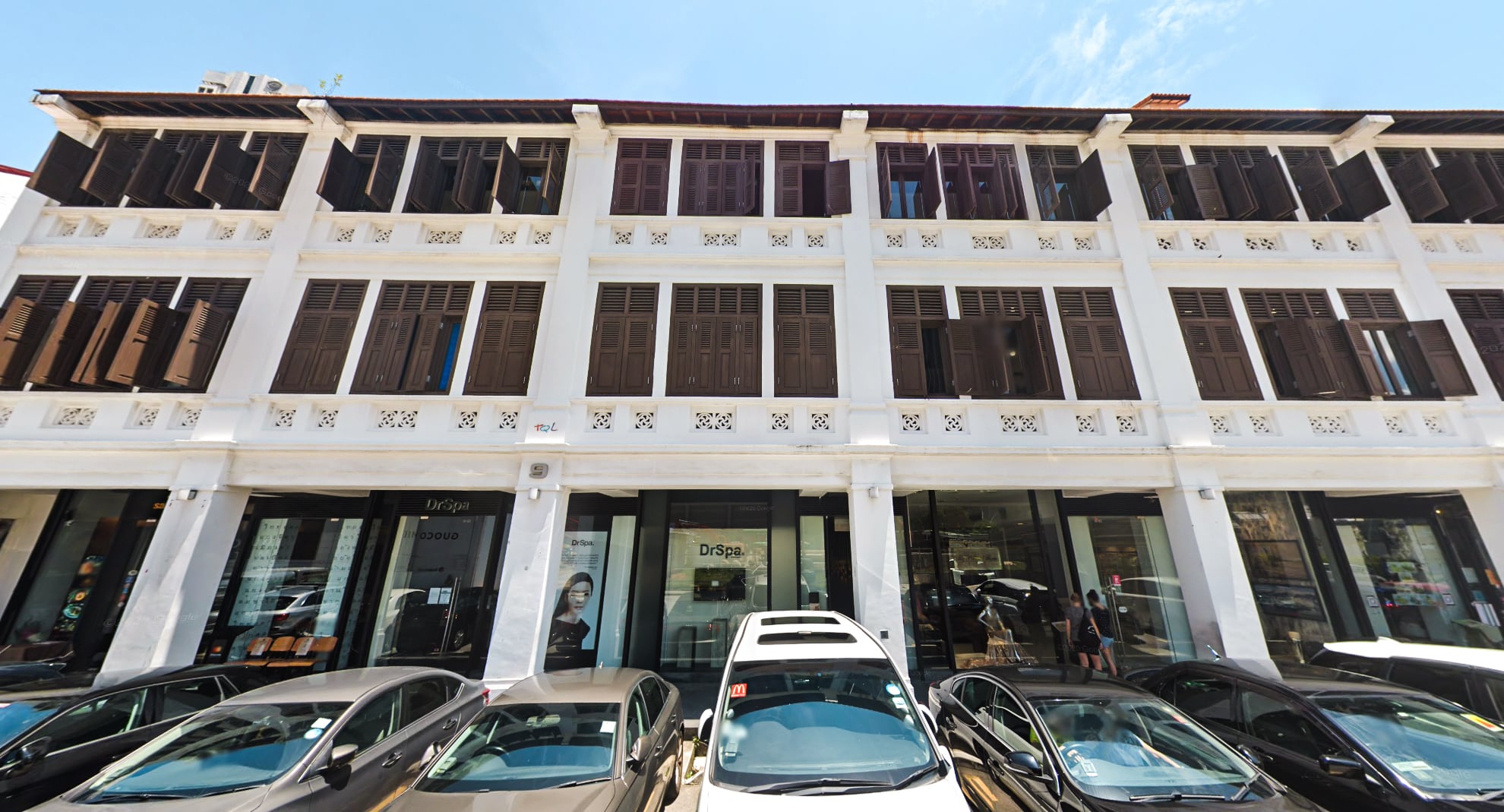
Address: 9 Tan Quee Lan Street
Closest MRT: Bugis (330m, 4 mins walk)
Tenure / TOP: 999 Years / 2005
Number of units: 30
Average PSF: $1,717
Conserved Element / Usage: Shophouse / Entrance Lobby, Retail & Commercial
Description:
Tan Quee Lan Street was under the radar for the longest time and famous perhaps only because of the F&B outlets located along the street and its surroundings – Liang Seah Street and Bugis Junction. That took a dramatic turn after the launch of Midtown Bay and Midtown Modern, with the latter even carrying the Tan Quee Lan Street address.
The area used to be a notorious red-light district before being cleaned out by the government in the 1970s. The 6 pre-war shophouses here at Tan Quee Lan Suites were carefully restored and its timber shutters reconditioned. A rear extension was also built to house the residential units while the shophouses served F&B joints and offices on its 1st and 2nd floors. You can check out some of the photos published by URA here when it was awarded the 2006 Architectural Heritage Awards.
Heritage Place
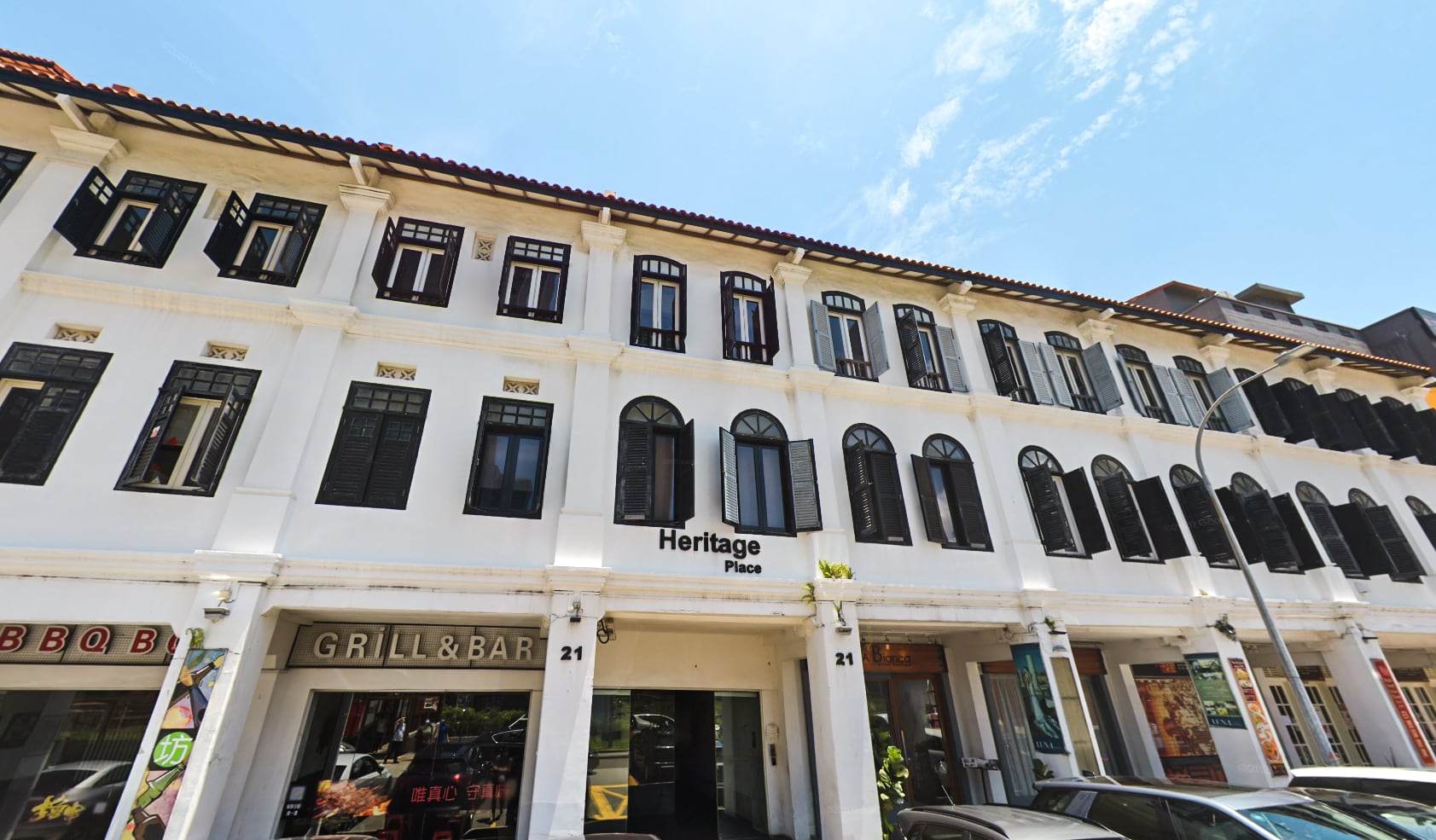
Address: 21 Tan Quee Lan Street
Closest MRT: Bugis (280m, 4 mins walk)
Tenure / TOP: 999 Years / 1999
Number of units: 21
Average PSF: ~$1,700
Conserved Element / Usage: Shophouse / Entrance Lobby, Retail & Commercial
Description:
Heritage Place is a near carbon copy of Tan Quee Lan Suites covered above, except that it is about 6 years older and its shophouse is actually used for subdivided residential units on the 2nd and 3rd floors.
Tan Quee Lan Street, along with its parallel Liang Seah and Purvis Streets were popular for their F&B and desserts at night. However, following the revitalisation of the Beach Road precinct, starting with South Beach Residences and Duo Residences, District 7 is now one of the hottest areas in town.
Midtown Bay and Midtown Modern were also launched in recent years, as with the sell-out project The M, with the latter even carrying the Tan Quee Lan Street address.
You can check out some of the photos published by URA here when its neighbour Tan Quee Lan Suites was awarded the 2006 Architectural Heritage Awards.
District 9
Tan Chin Tuan Mansion
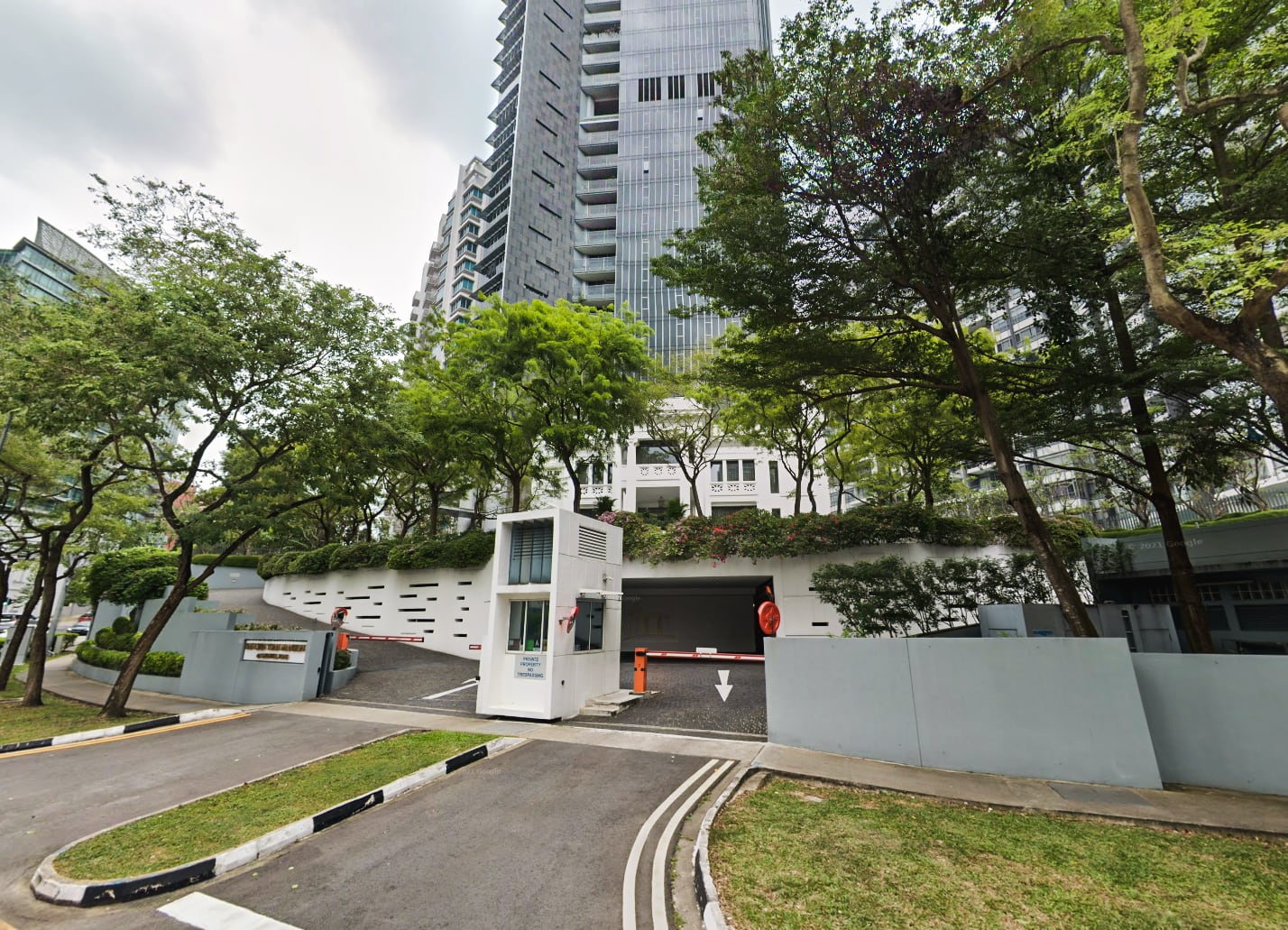
Address: 42 Cairnhill Road
Closest MRT: Somerset (600m, 8 mins walk)
Tenure / TOP: Freehold / 2008
Number of units: 16
Average PSF: For Rent Only
Conserved Element / Usage: Bungalow / Clubhouse
Description:
The development’s name says it all – Tan Chin Tuan Mansion belongs to descendants of esteemed businessman the late Tan Chin Tuan, Honorary Life President of OCBC Bank. Today, Tecity Group is led by Chew Gek Khim, Tan Chin Tuan’s granddaughter and they own a majority interest in SGX-listed Straits Trading, with interests in real estate, hospitality, and natural resources. The family is holding on to the units and they are only available for rent. The conserved bungalow is now used as the clubhouse used to host formal and informal events for the Tan Chin Tuan Foundation and Tecity Group and contains extensive memorabilia honouring the achievements of the late businessman.
The origins of this bungalow date back to 1926, when it was built for the late philanthropist and businessman Tan Kah Kee, after whom the eponymous MRT station was named after. Tan Kah Kee was instrumental in Singapore’s education scene and is credited for contributing significantly to the schools some of us at Stacked attended – Tao Nan School, Hwa Chong Institution, Anglo-Chinese School and the list goes on. Similarly, it was his commitment to obtain funds for Xiamen University which he founded that led to him selling this bungalow during the depths of the Great Depression in 1929. Thereafter, it was bought by Tan Chin Tuan in 1939 and was used as his family’s residence for many decades after.
This was constructed as a grand Victorian house with elaborate ornamentation. The most distinct feature is arguably the bell-shaped turret, inspired by the Indian mansions of its day. Eu Villa on Mount Sophia and Jade Mansion at Nassim Road were contemporaries with similar features but have now been demolished with condos in their place. The bungalow was gazetted for conservation in 2003 and you can read URA’s more detailed history about it here.
More from Stacked
5 Spacious HDB Flats That Come With Unique Balconies
Contrary to general perception, HDB flats can be more unique than one might think. It's not just about the layout,…
Most of us will never get the chance to step into Tan Chin Tuan Mansion given its closely-held nature but you will be able to gain sneak peeks into this beautiful clubhouse in this interview with Chew Gek Khim in 2020.
Sophia Hills
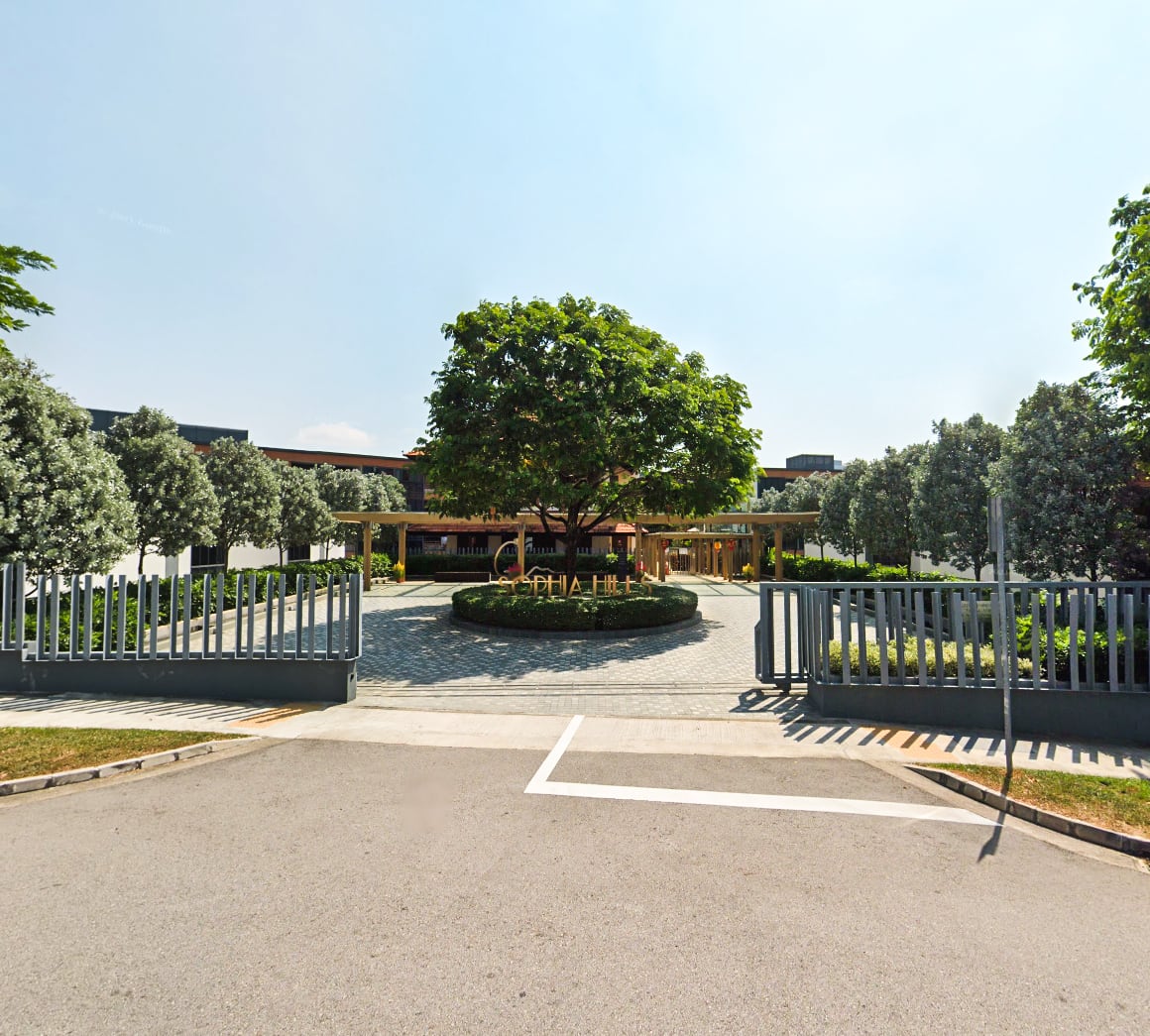
Address: 11 – 31 Mount Sophia
Closest MRT: Dhoby Ghaut (500m, 6 mins walk)
Tenure / TOP: 99 Years from 2013 / 2018
Number of units: 493
Average PSF: $1,913
Conserved Element / Usage: 2 Schools & 1 Chapel / Childcare, Restaurant & Clubhouse
Description:
Sophia Hills is the only development in Singapore with 3 conservation buildings within its compounds – the original Nam Wah Girls’ School, Trinity Theological College Chapel, and Olson Building which was part of Methodist Girls School. They are now used as a childcare centre (House on the Hill Montessori), restaurant (Cafe Melba), and condo clubhouse respectively.
Besides that distinct honour, Sophia Hills is also the largest condo development on Mount Sophia, which is populated with boutique developments. This was not always the case of course, as Mount Sophia was once the residence of Eu Tong Sen. Eu Villa was constructed in 1915 by Swan & Maclaren at a princely $1m and featured a similar bell-shaped turret like the one you see at Tan Chin Tuan Mansion above.
Nam Wah Girls’ School was located at 2 Adis Road and was built in 1941 to accommodate the growing student population. During WW2, it was used as the headquarters of the Japanese Imperial Army before being acquired by Nanyang Academy of Fine Arts and subsequently, Sophia Student Hostel. Today, it is home to House on the Hill Montessori, which is very apt considering it is literally on a hill.
Trinity Theological College was founded in 1948 as a religious educational institution. The Chapel was completed in 1972 by Chan Kui Chuan, who was also the architect behind UIC Building (1973) and Mt. Elizabeth Hospital (1980). Most distinctively, it has a roof-shaped “人” (the Chinese character to resemble people) where its 2 strokes are unequal in length, symbolizing man’s search for God. You can find more of its history and restoration through a video by URA here. The chapel was Mount Sophia was acquired by the Government in 1996 and Trinity Theological College subsequently moved to Upper Bukit Timah where it has also constructed a modern replica of the “人” character.
Haus on Handy
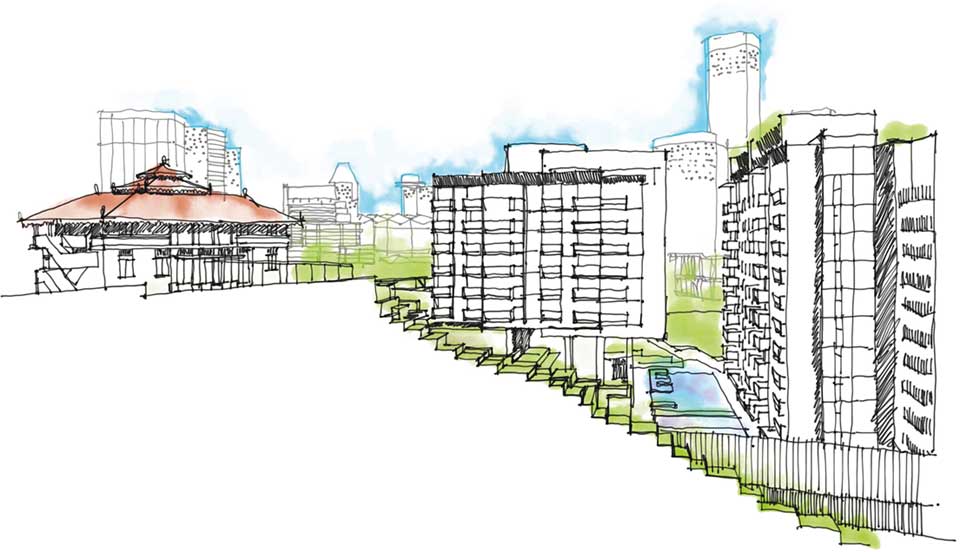
Address: 28 & 30 Handy Road
Closest MRT: Dhoby Ghaut (190m, 3 mins walk)
Tenure / TOP: 99 Years / 2023
Number of units: 188
Average PSF: $2,620
Conserved Element / Usage: Bungalow / Clubhouse
Description:
Haus on Handy is located on the last available residential plot along Handy Road, between The Cathay and Plaza Singapura, and is currently being developed by CDL. It occupies a sloping plot that extends all the way up to Mount Sophia, where the conserved bungalow is located.
12 Mount Sophia was constructed in 1892 for the Singapore Land Company and came to be known as the “Tower House” after being sold to the Methodist Church in 1932. The Church used the bungalow as a home for missionaries and subsequently as the Women’s Society of Christian Service Centre in Dec 1989 before being acquired by the Government in 1998. The House on the Hill Montessori, now housed at the conserved Nam Wah Girls School at Sophia Hills, occupied this house before the land was sold to CDL.
This conserved bungalow had extensive verandahs and intricately wrought-iron fittings. Pictures speak a thousand words and credit goes to the comprehensive research done by the folks at The Long and Winding Road for their coverage of this colonial house filled with so much history. Oftentimes, I am torn between conserving the original building and bringing a modern twist to it just as is the case for all of these covered here.
12 Mount Sophia will serve as the Clubhouse for Haus on Handy and will offer residents 2 floors of facilities – from dining lounges to the gym and concierge services. Based on the renderings from the brochure, the conserved bungalow looks like something to look forward to.
Watermark Robertson Quay
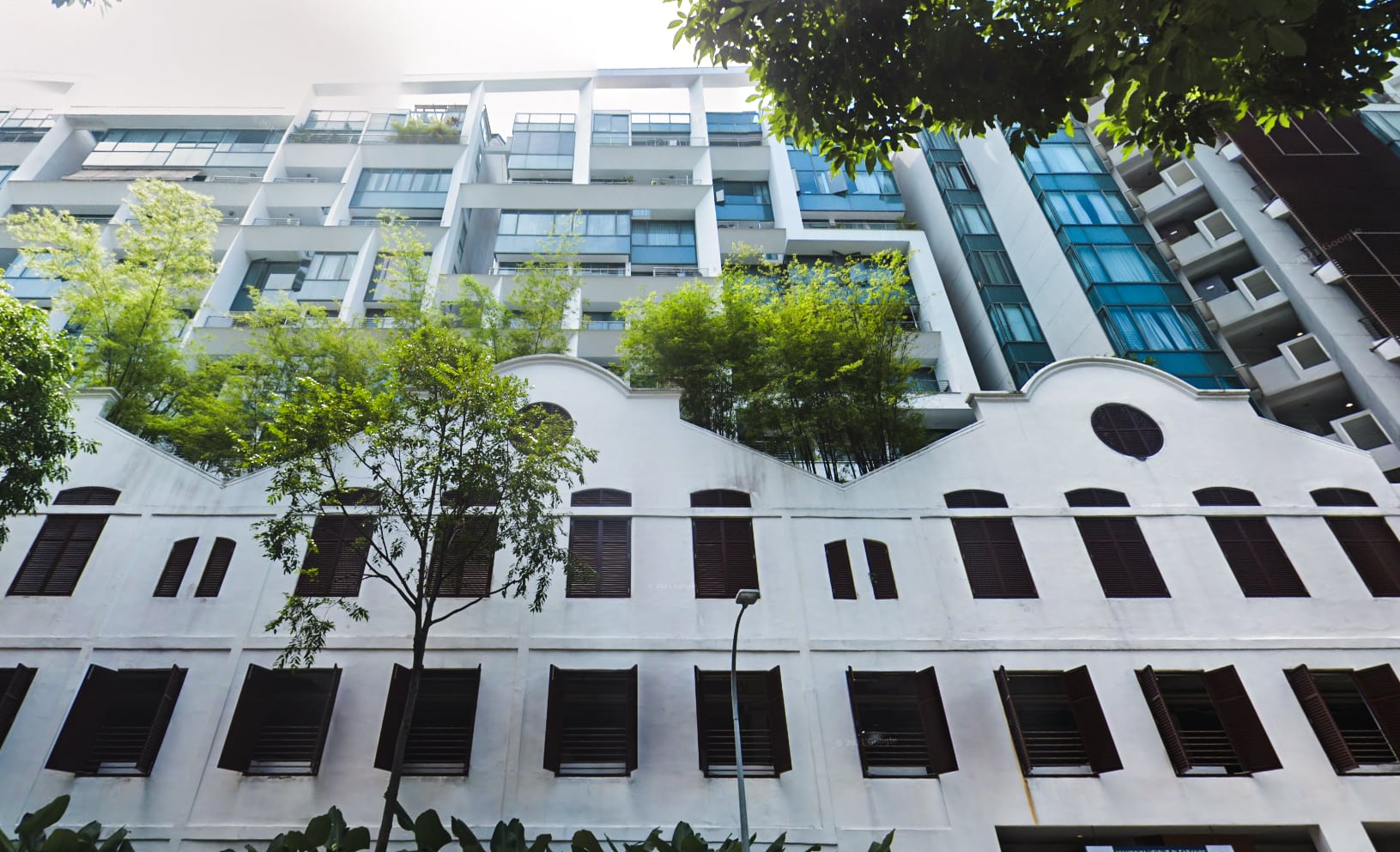
Address: 1 – 7 Rodyk Street
Closest MRT: Fort Canning (800m, 11 mins walk)
Tenure / TOP: Freehold / 2008
Number of units: 208
Average PSF: $1,883
Conserved Element / Usage: Warehouses / Commercial
Description:
The stretch along the Singapore River used to house godowns (warehouses) as the river represented commerce that brought Singapore its first pot of gold. Gradually, they have disappeared with the increasing prosperity and rezoning of these areas.
There are 2 condos that have incorporated godowns in their developments – Riviere, which I reviewed recently will convert the 3 warehouses into F&B outlets, specialty grocer, and lobby for the serviced apartment. That would be covered in Part 2 of this series as Riviere is considered an OCR development.
In contrast, I would say the way the warehouses are conserved here at Watermark is slightly different. While they share a similar facade as those at Riviere, the residential component is actually built in the middle of the conserved warehouses, which stretch all the way from Rodyk Street to those fronting the Singapore River. That said, only 4 warehouses have been more extensively conserved for F&B purposes fronting the Singapore River. The conservation efforts for the other 7 on Rodyk Street were more half-baked as they simply kept their facades and made way for residential units to be built above. The conserved warehouses were built by Danish trading firm East Asiatic Company in the late 1800s.
The Wharf Residence
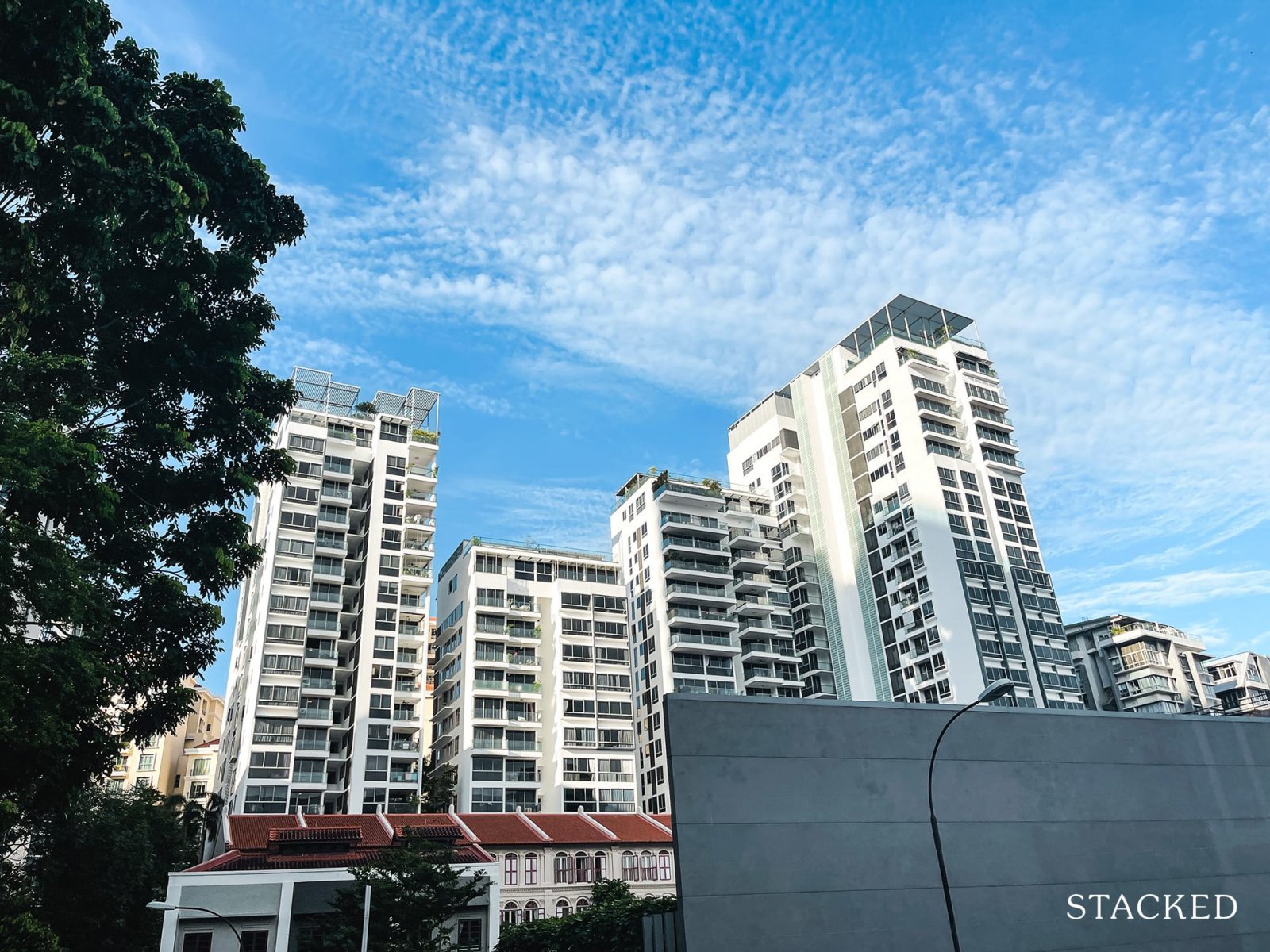
Address: 7 – 15 Tong Watt Road
Closest MRT: Fort Canning (560m, 7 mins walk)
Tenure / TOP: 999 Years / 2013
Number of units: 186
Average PSF: $2,121 (excluding shophouse)
Conserved Element / Usage: Shophouse / Residential
Description:
The Wharf Residence incorporates 13 conserved shophouses with 4 towers of 23 storey blocks. With a near-Freehold status and condo facilities such as a lap pool and BBQ pits, buyers of the 13 shophouses can enjoy the modern amenities while having a showpiece of a home. The last transaction for 1 of the shophouses was in September 2020 for $7.4m for 4,713 sqft ($1,570 psf) of built-up area.
Contrary to what most would think, the row of shophouses were actually acquired by developer Capitaland in several phases since 1999, with the final piece to the puzzle being 8 Tong Watt Road, which was a gap between the houses it owned on the street (sounds a little like NoMa at Geylang for those in the know). 8 Tong Watt was eventually acquired for $9m in 2007 in a bidding war that opened at just $6m. Just imagine how different the facade of the condo would have looked had Capitaland lost the bid. Not much is known about the history of these shophouses but they sure did look poorly maintained prior to their restoration based on photos shared in a forum here and a slighter more aesthetic old photo from 1972.
Gambier Court
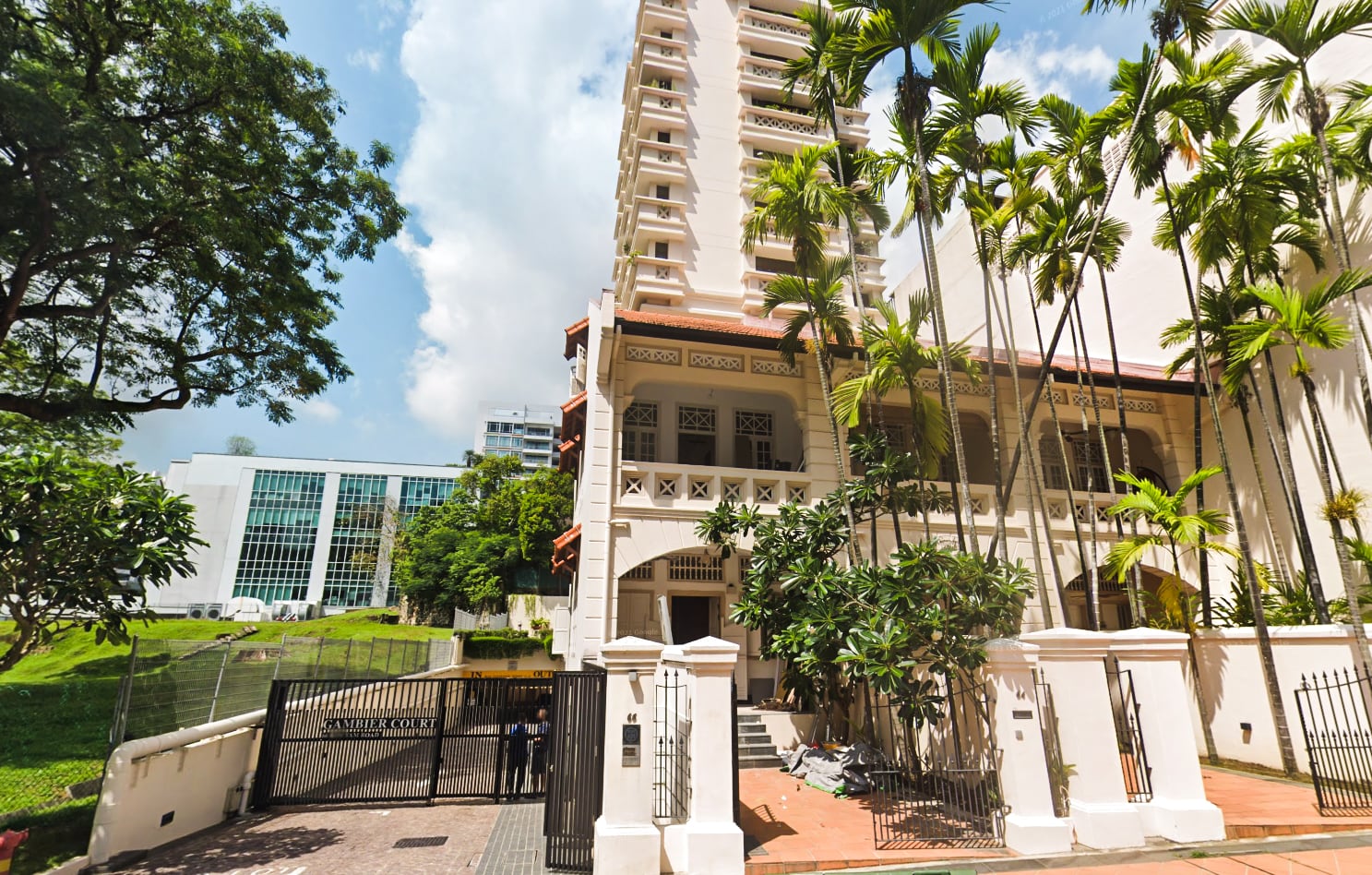
Address: 60 – 66 Kim Yam Road
Closest MRT: Fort Canning (650m, 7 mins walk)
Tenure / TOP: 99 Years from 1997 / 1999
Number of units: 23
Average PSF: $1,480 (excluding shophouse)
Conserved Element / Usage: Shophouse / Residential
Description:
Gambier Court is a boutique development comprising 3 shophouses and 20 other units housed in a 10-storey tower. The shophouses of 62, 64, and 66 Kim Yam Road were acquired for just $7.7m back in 1996, albeit of a 99-year lease. The latest transaction was for 64 Kim Yam Road in January 2020 for $3.28m for 2,563 sqft ($1,278 psf) of built-up area. It’s probably one of the cheapest shophouses around Singapore, especially considering its District 9 location and MRT access.
Once again, not much history is known about these 3 shophouses although there was a short write-up by URA on it. They were constructed in the 19th century and once home to gambier plantation owners and were probably where the development’s name took inspiration from. You do get direct access to a small pool via your backdoor and basement parking as well. Key elements of a shophouse were retained as you can tell from the external facade.
Attitude @ Kim Yam
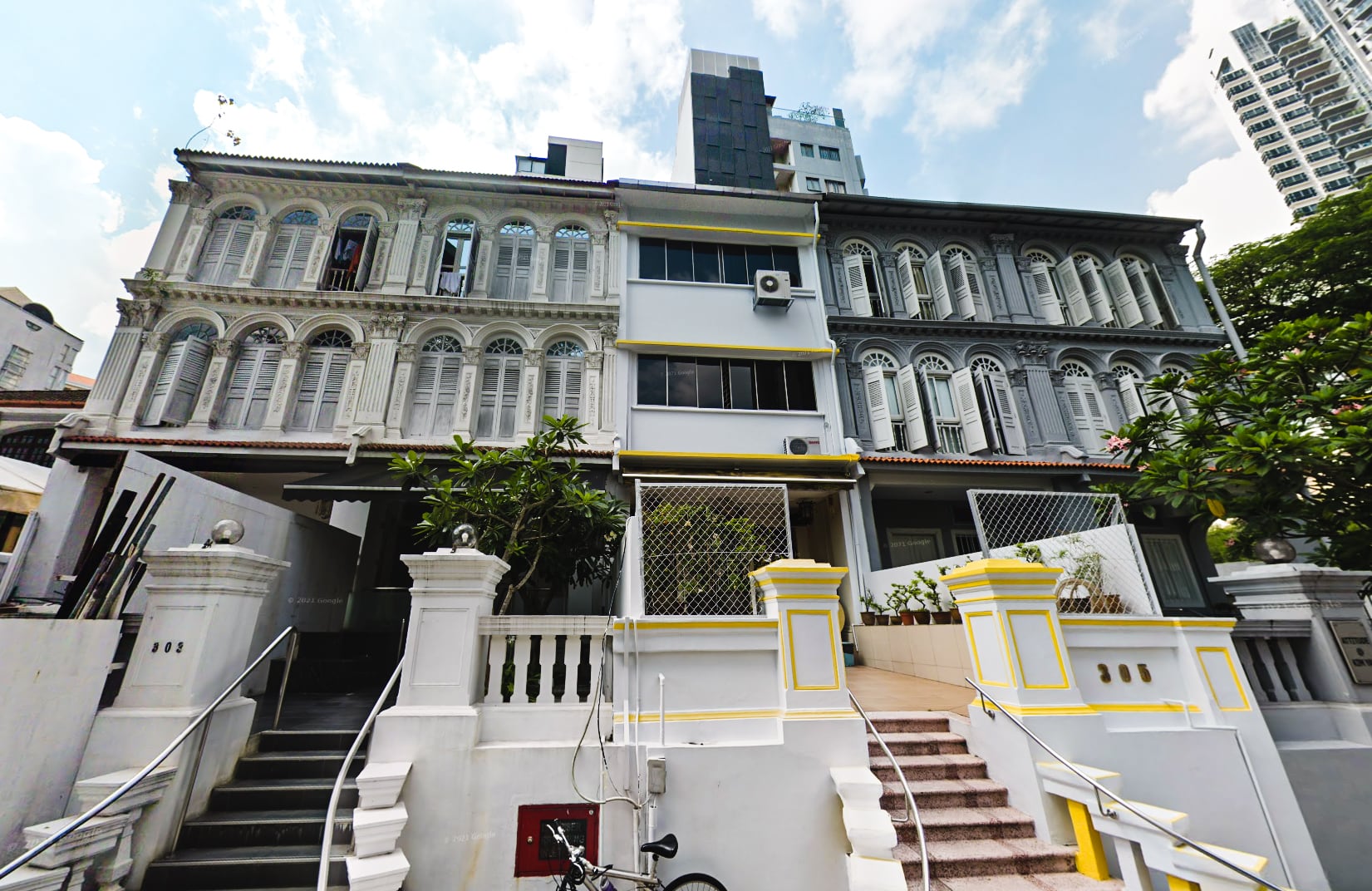
Address: 1 Kim Yam Road
Closest MRT: Fort Canning / Somerset (~850m, 10 mins walk)
Tenure / TOP: 999 Years / 2011
Number of units: 33
Average PSF: $2,188
Conserved Element / Usage: Shophouse / Residential
Description:
Attitude @ Kim Yam differs from Gambier Court down the road because the developers have instead subdivided the shophouses into Studio and 1 Bedroom units instead of selling them as distinct shophouses. While it’s nice to give more people a share of Singapore’s heritage, it does reduce the grandeur of the development in my opinion. The psf is much higher here compared to Gambier Court due to the smaller unit sizes (range from 334 sqft to 689 sqft) and 999 Year nature.
I was unable to find further information about the shophouses and its history. It is located just opposite The Iveria, a new launch development set to be completed in 2022. Facilities here are very limited given its small land plot and only consists of a small rooftop swimming pool.
Mackenzie Regency
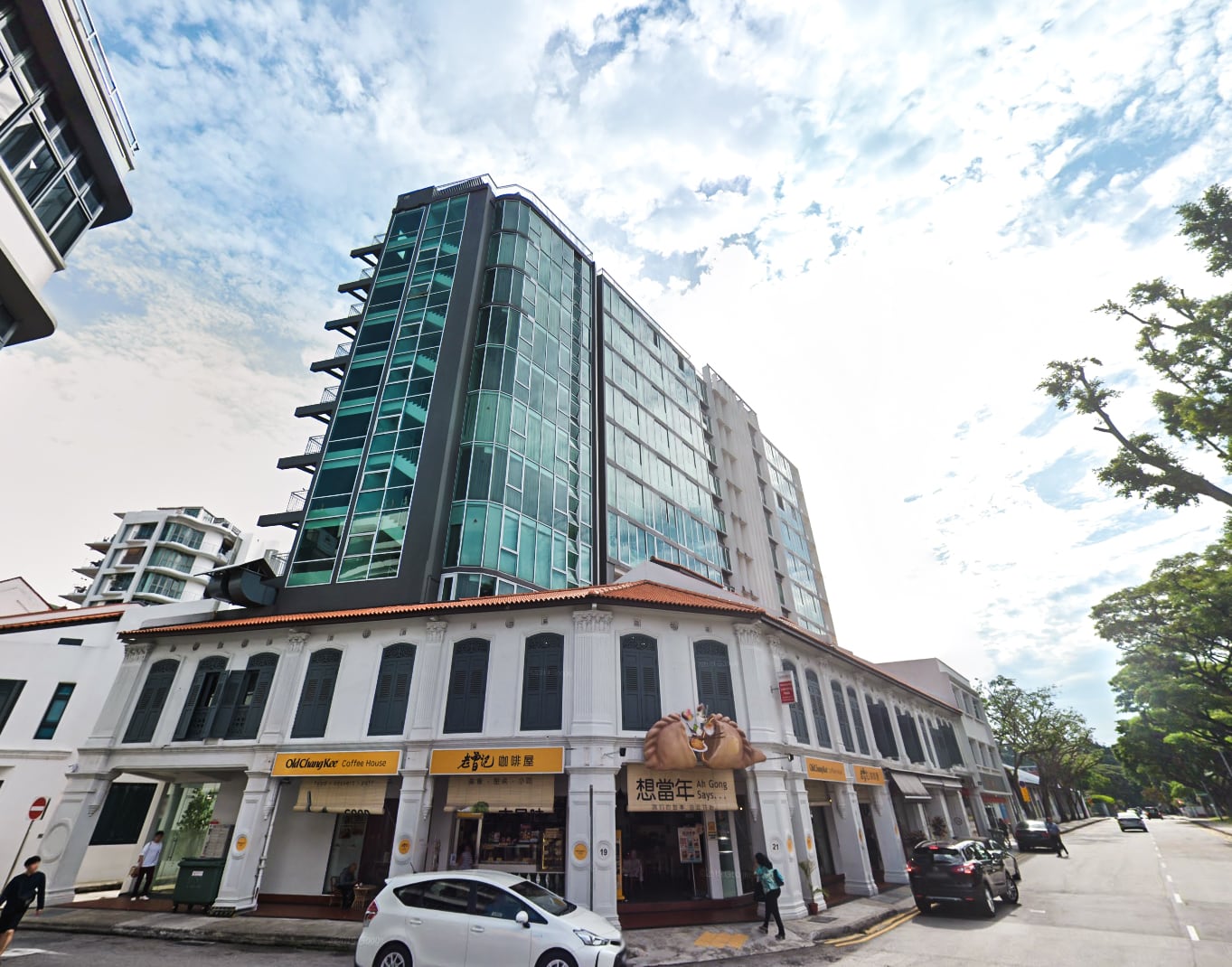
Address: 19, 23, 33 Mackenzie Road
Closest MRT: Little India (320m, 4 mins walk)
Tenure / TOP: Freehold / 2007
Number of units: 19
Average PSF: $1,472
Conserved Element / Usage: Shophouse / Commercial
Description:
Mackenzie Regency is a boutique development sandwiched between the start of Bukit Timah Road and Mount Emily Road and is a short walk from Little India MRT. The conserved buildings are the row of shophouses along Mackenzie Road, which are zoned as commercial.
As you might already be able to tell, these smaller developments (Attitude @ Kim Yam and this) are some of the less desirable apartments with conserved buildings on this list. They are not the fanciest buildings around and usually mean the facilities in the development are limited. That said, the shophouses here at Mackenzie Regency are still now leased to several well-known F&B outlets such as Chef Kang’s, a Michelin Guide restaurant, and Old Chang Kee’s Coffee House. Your lunch and dinner plans are pretty much settled if you stay here.
District 10
Draycott Eight
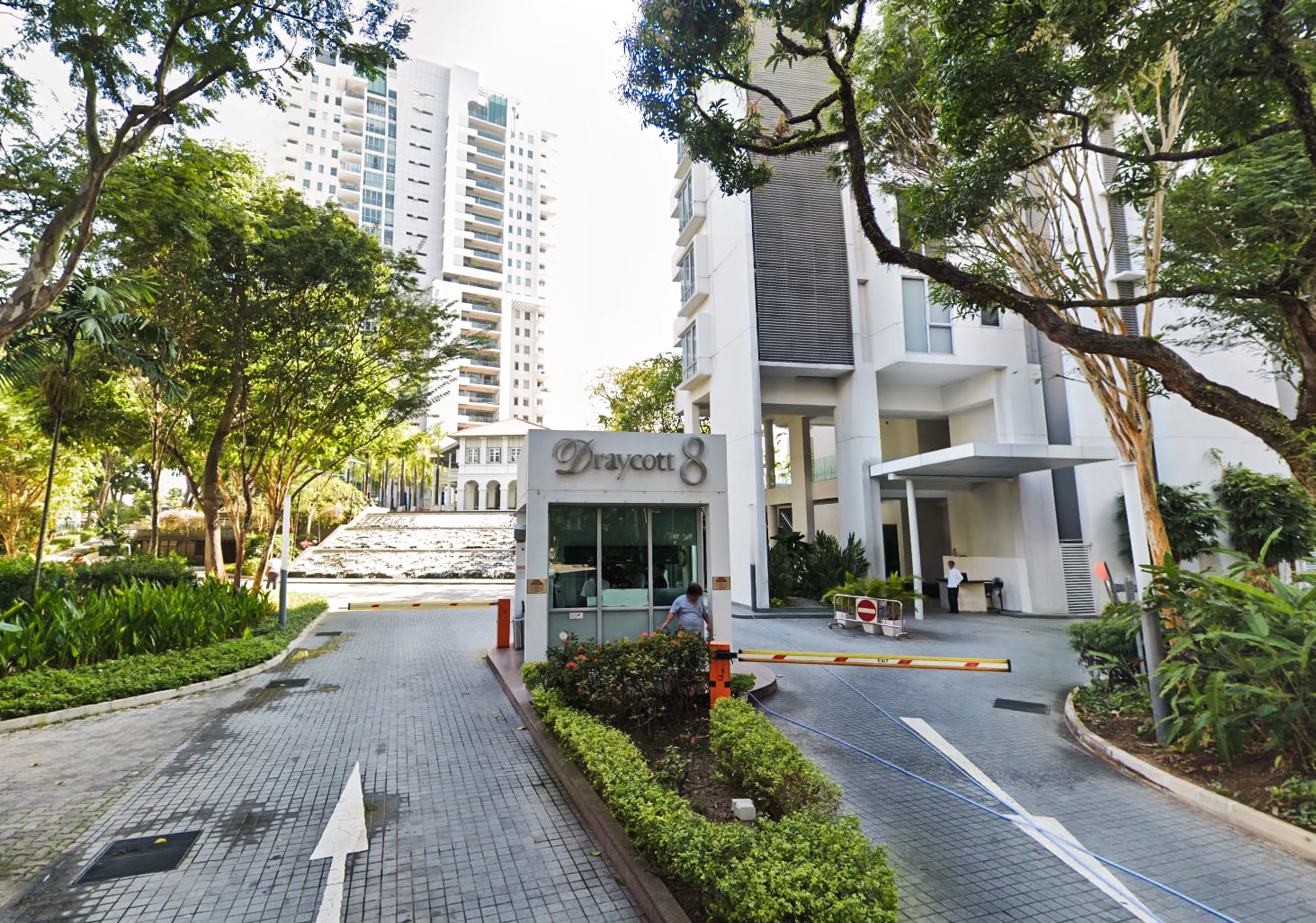
Address: 6 – 10 Draycott Park
Closest MRT: Newton (800m, 11 mins walk)
Tenure / TOP: 99 Years from 1997 / 2006
Number of units: 136
Average PSF: $1,879
Conserved Element / Usage: Bungalow / Clubhouse
Description:
Draycott Eight is one of the 2 developments in District 10 with a conserved bungalow within its grounds, with the other being Spring Grove. Draycott Eight, being the newer of the 2, is exquisitely executed and perfect for those who enjoy the finer things in life. Just check out their brochure which looks as good as any luxury new launch today. There’s even an opportunity to get a Virtual Tour of their 4 Bedroom unit here. With just 136 units on 153,000 sqft of land, this density ratio is almost unheard of these days. You also get full condo facilities such as a 50m lap pool, tennis court, and plenty more within the conserved bungalow which serves as the clubhouse today – gym, function room, billiards room, theatre, wine cellar, and the list goes on.
At 16,000 sqft, the 1920s Black & White colonial bungalow is reportedly the largest condo clubhouse in Singapore. It was once the residence of James Robertson (General Manager, Guthrie & Company), the Air Marshall of Singapore, and Alliance Française de Singapour before being sold to Wingtai in 1997. Today, it combines the heritage of a Black & White bungalow with the modernity of 21st-century lifestyle. Just check out how the modern courtyard and book lobby blends in perfectly with colonnaded verandah, ornate iron-cast railings, and timber louvered doors and compare it to what it used to be.
Spring Grove
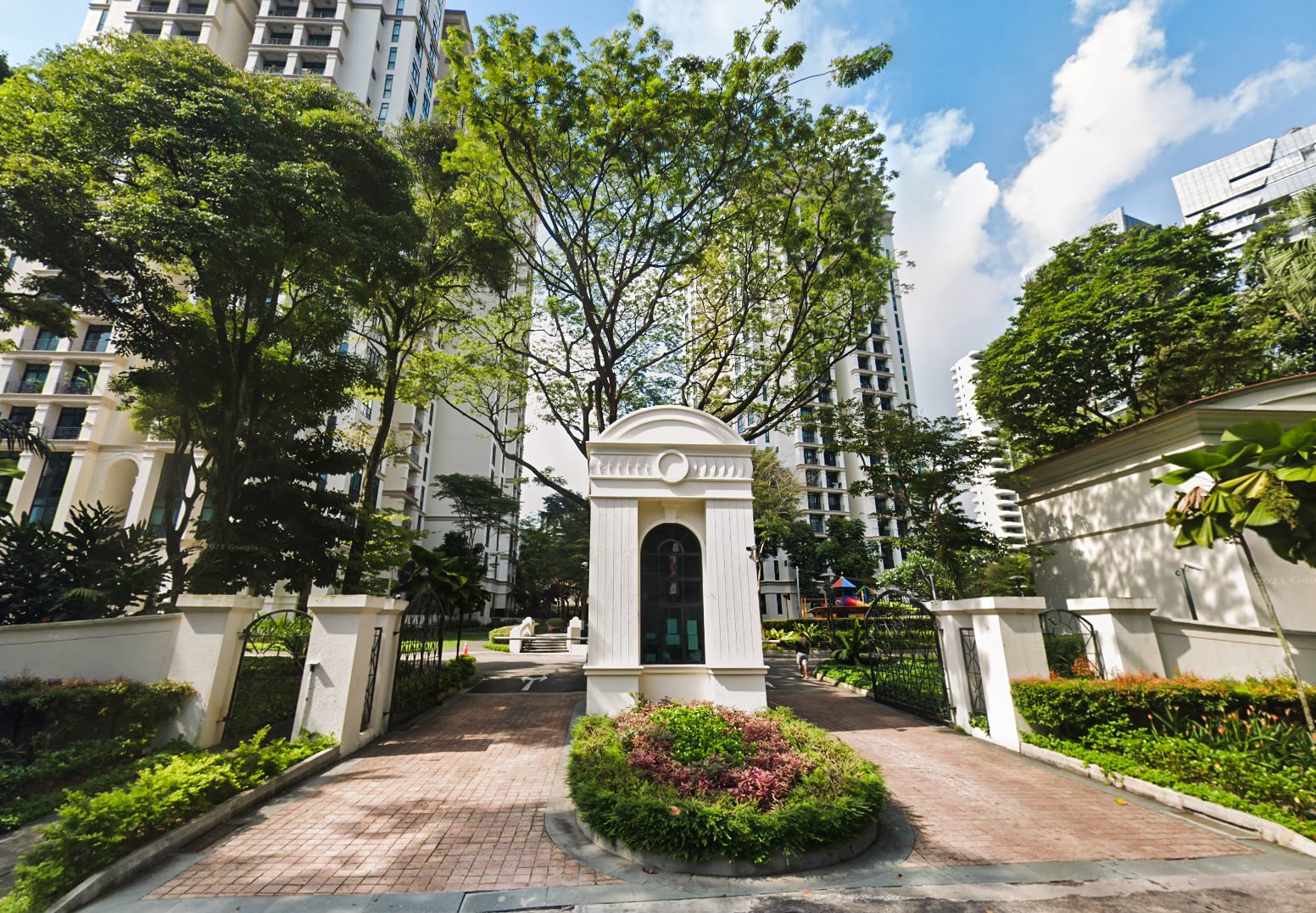
Address: 53 – 53C Grange Road
Closest MRT: Orchard (1.1km, 15 mins walk)
Tenure / TOP: 99 Years from 1991 / 1996
Number of units: 325
Average PSF: $1,528
Conserved Element / Usage: Bungalow / Clubhouse
Description:
The condo takes its name from the conserved Spring Grove House and its 263,513 sqft of land offers buyers lifestyle options close to Orchard yet at a fraction of the price. This is likely due to its 99 Year tenure and ultimate ownership belonging to the United States, making Spring Grove a trickier en-bloc target.
The exact year Spring Grove House was built is a subject of debate – either between 1849 to 1857 or between 1888 to 1890 in Neo-Classical Victorian style. It sits on a plot of land originally owned by Hoo Ah Kay (Whampoa) in 1845 before it was subsequently sold to equally prominent figures such as John Harvey (Borneo & Company), Edward Boustead (Boustead & Co), Joseph Aaron Elias, and Straits Trading Company.
Following the end of WW2, the US Government purchased Spring Grove House for US$ 83,438 in 1950. In 1966, Francis Galbraith was appointed America’s first Ambassador to Singapore and saw the potential to restore Spring Grove House into an Ambassadorial residence. It was lavish, to say the least, and stayed that way till the house and the land was sold in 1992 to be developed into the condo we see today.
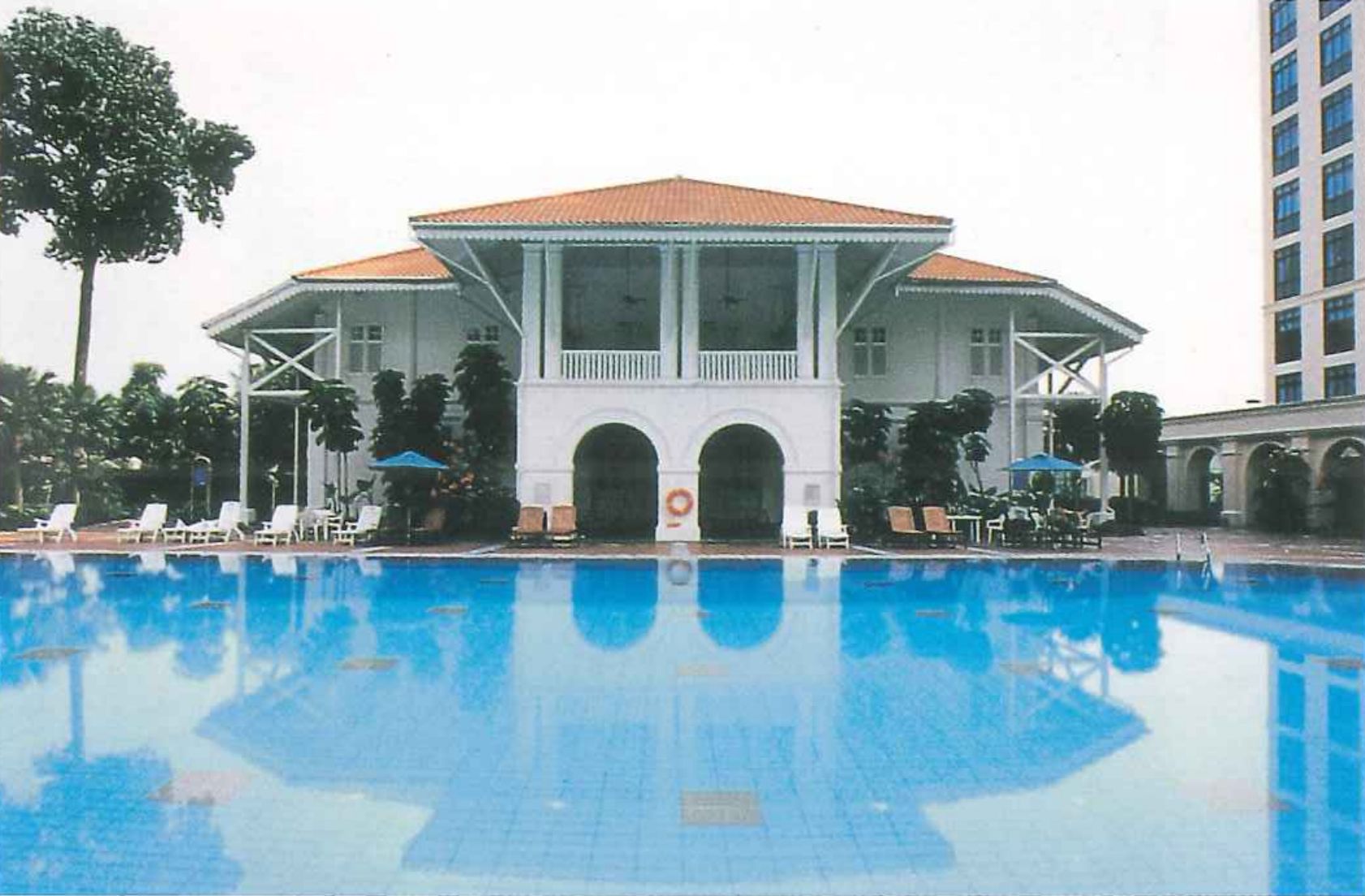
Most elements of the bungalow were carefully restored into the clubhouse you see today. You will appreciate retained features such as the open verandah, front entrance porch, eaves supported by timber post, and the timber staircase balustrade detail. You can find more photos and the history of Spring Grove House here.
District 11
Buckley Classique
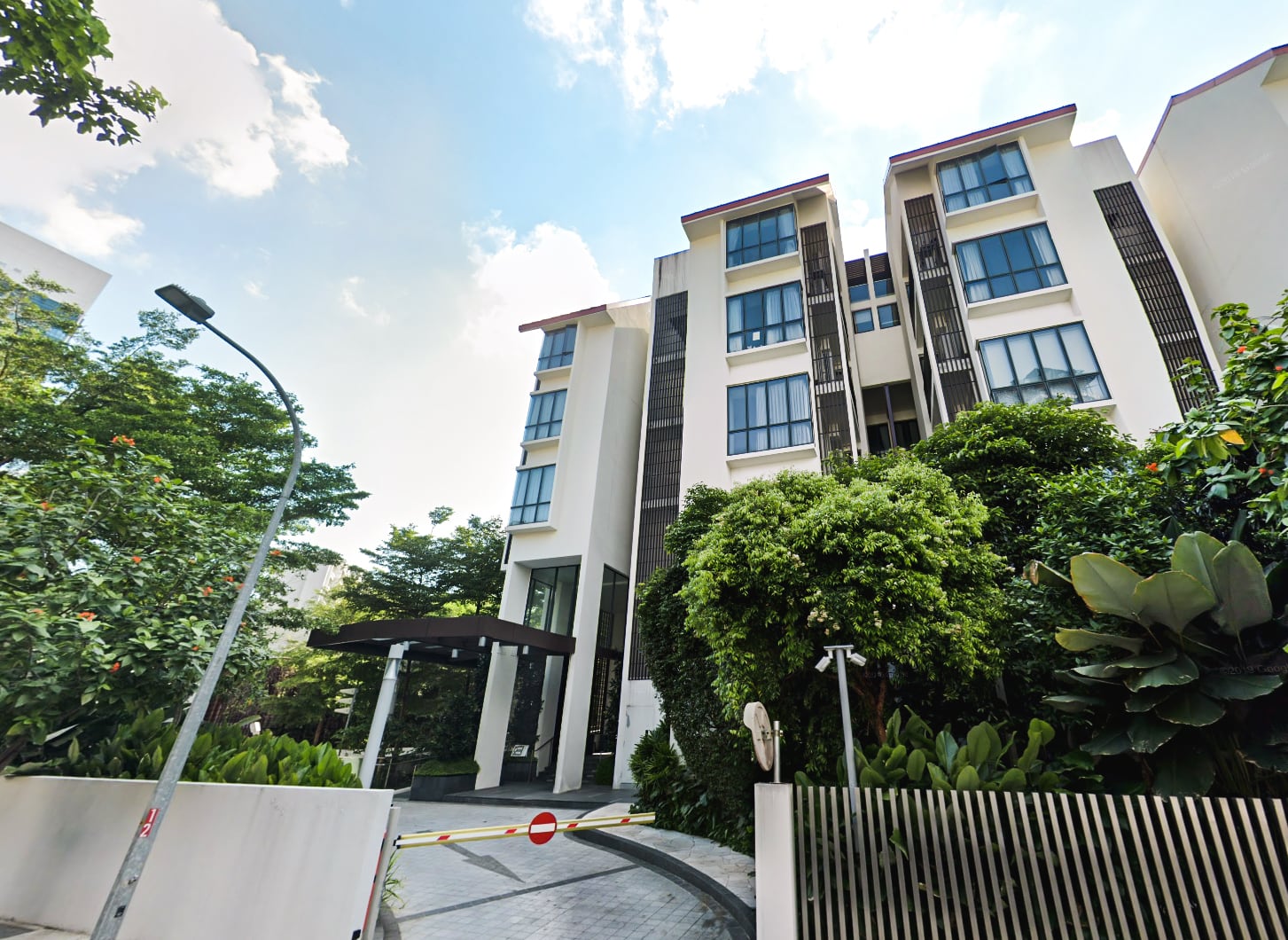
Address: 9 & 11 Buckley Road
Closest MRT: Novena (900m, 11 mins walk)
Tenure / TOP: Freehold / 2015
Number of units: 64
Average PSF: $1,915
Conserved Element / Usage: Bungalow / Clubhouse
Description:
Buckley Classique is an amalgamation of 2 land plots, 9 and 11 Buckley Road by City Developments Limited. 9 Buckley housed an old, dilapidated colonial bungalow from the 1900s while 11 Buckley was formerly Buckley Mansion, which was sold en bloc for $633 psf in 2007. With just 64 units here, all residents get views of the pool and the conserved bungalow, which serves as the clubhouse today. The clubhouse features a function room fit for 20, a gym, children’s playroom, reading area, and pool corner.
Not much is known about the past owners of this colonial bungalow but it remains one of the few bungalows in Singapore built on raised footings. Baroque and classical architectural styling is evident throughout and key elements such as cornices, moulded architraves, keystones, and the Buckley Arch were painstakingly restored. Testament to CDL’s efforts, the bungalow was granted conservation status in 2008. You can witness its transformation and story through this short clip here or check out its marketing brochure.
Conclusion
Not gonna lie, researching these conserved buildings and their history sent a chill down my spine. I’m grateful for the extensive coverage that URA and some independent writers have completed to detail the history behind these buildings and I hope to have credited them along with this article.
On the one hand, I am glad that the conserved buildings have been so carefully restored under URA’s 3R Principle (I know, there are laws for everything in Singapore) and made modern and aesthetically pleasing. Many of them now have practical purposes such as clubhouses or commercial units. Yet, on the other hand, I wonder if we have room to accommodate some old, less well-maintained buildings, even if they are right smack in the middle of our touristy areas. The buildings in their old, most authentic form might give Singapore more of a character and old-world charm. Let me know what you think in the comments below.
For more on the Singapore private property market, follow us on Stacked. We’ll keep you in touch with the latest trends, and provide you with the most in-depth reviews.
If you’d like to get in touch for a more in-depth consultation, you can do so here.
Matthew Kwan
Matt read Law in university but has since traded legal statutes for the world of high finance on weekdays. On weekends, he delves into his keen interest in real estate, which has taken him to more 150 new and resale developments since the age of 16. Since first writing for Stacked, Matt has made his first home purchase and continues to appreciate the evolving trends of today's market. In his free time, Matt goes on walks and writes about (more) real estate on his personal Instagram page @propertyzaikia
Read next from Property Picks
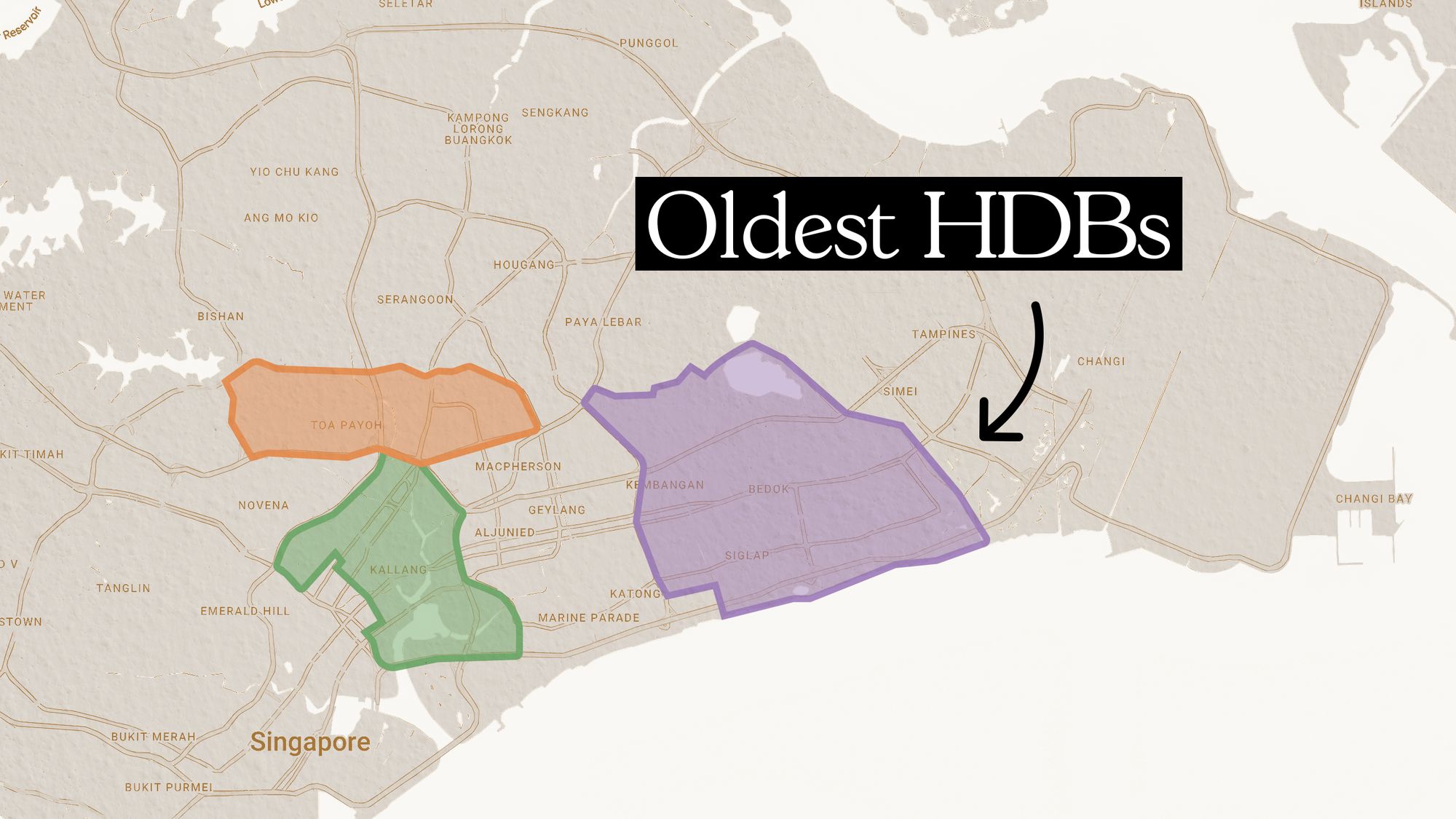
Property Picks Where to Find Singapore’s Oldest HDB Flats (And What They Cost In 2025)
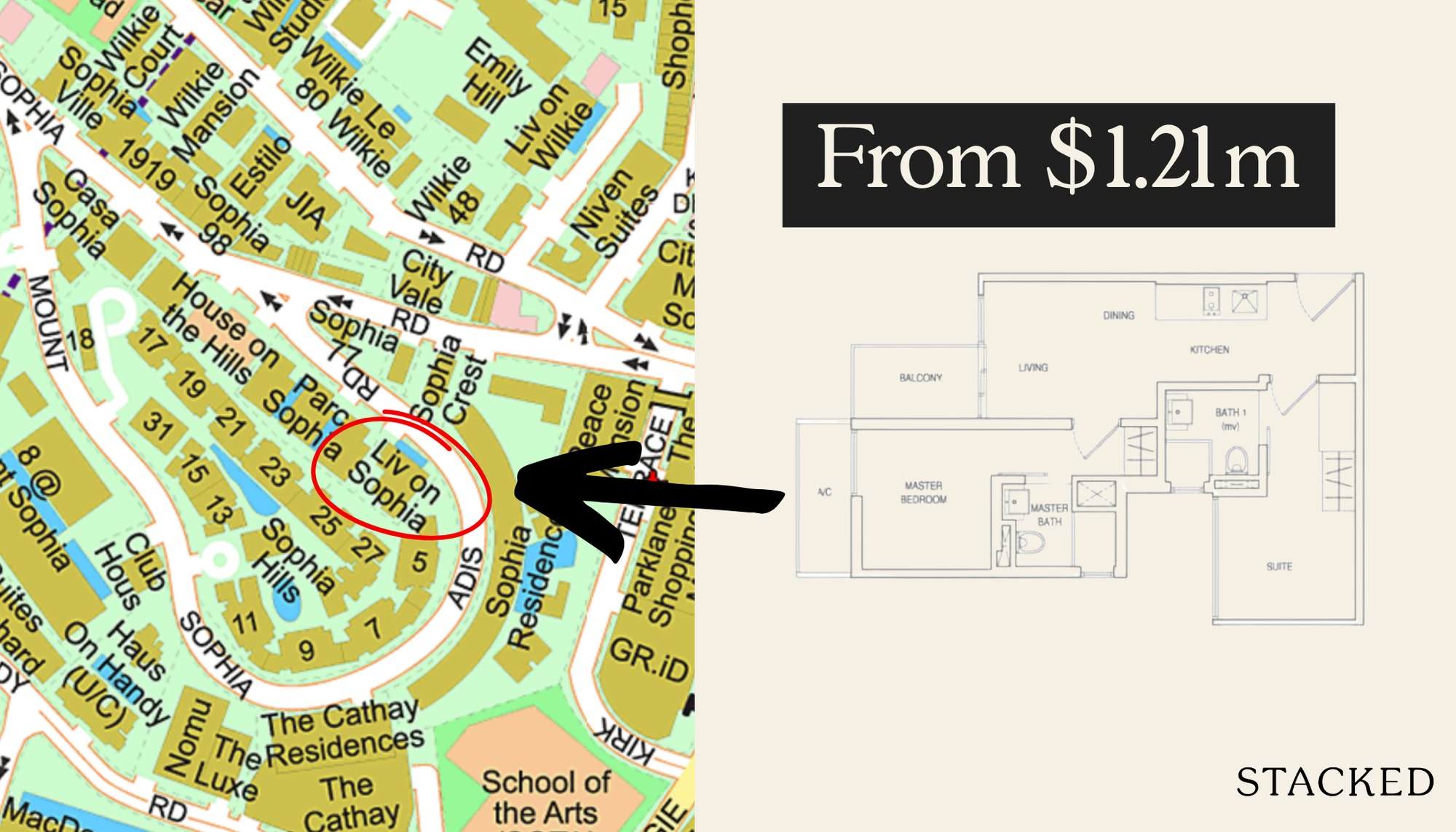
Property Picks Where To Find The Cheapest 2 Bedroom Resale Units In Central Singapore (From $1.2m)
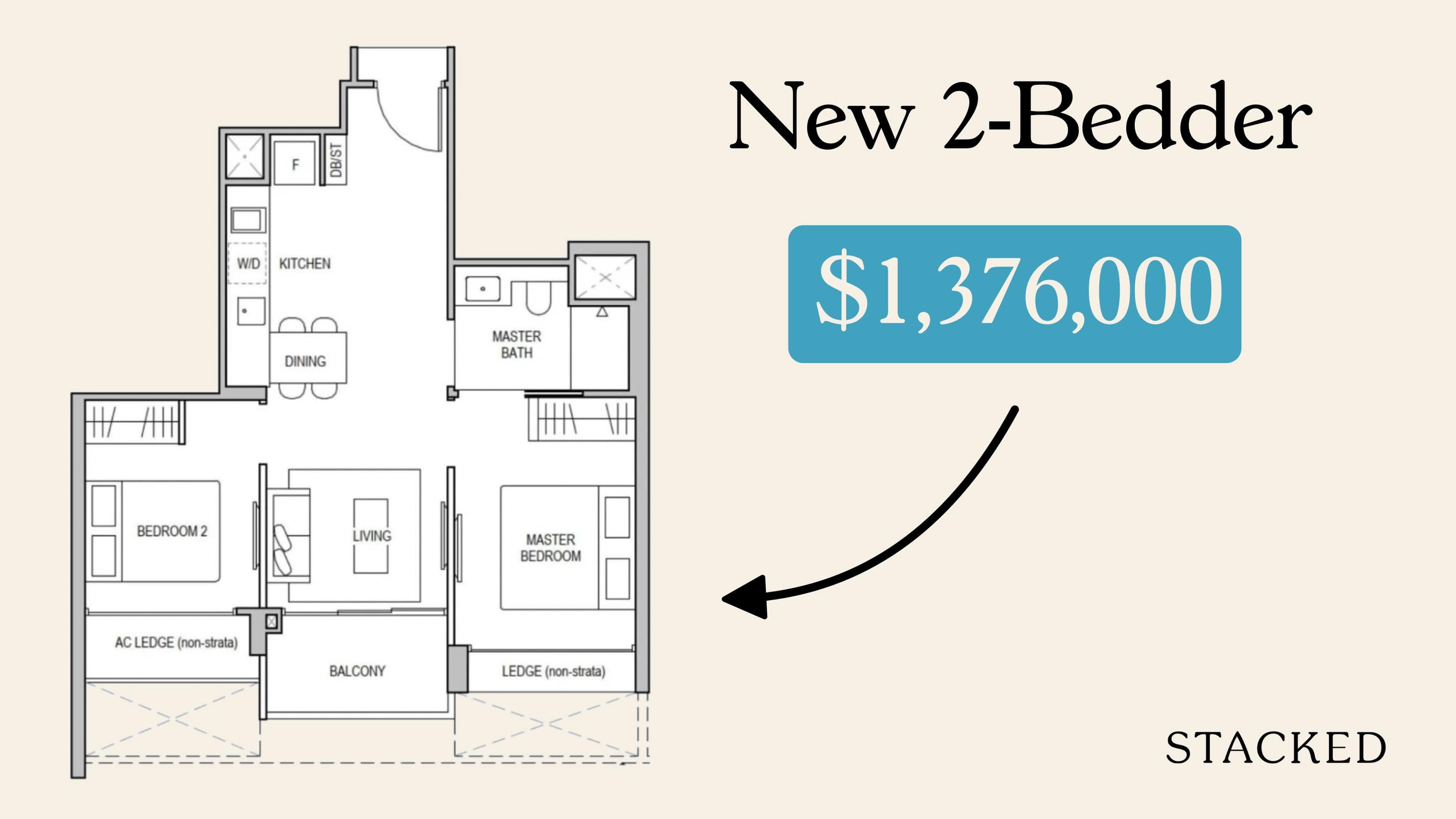
Property Picks 19 Cheaper New Launch Condos Priced At $1.5m Or Less. Here’s Where To Look
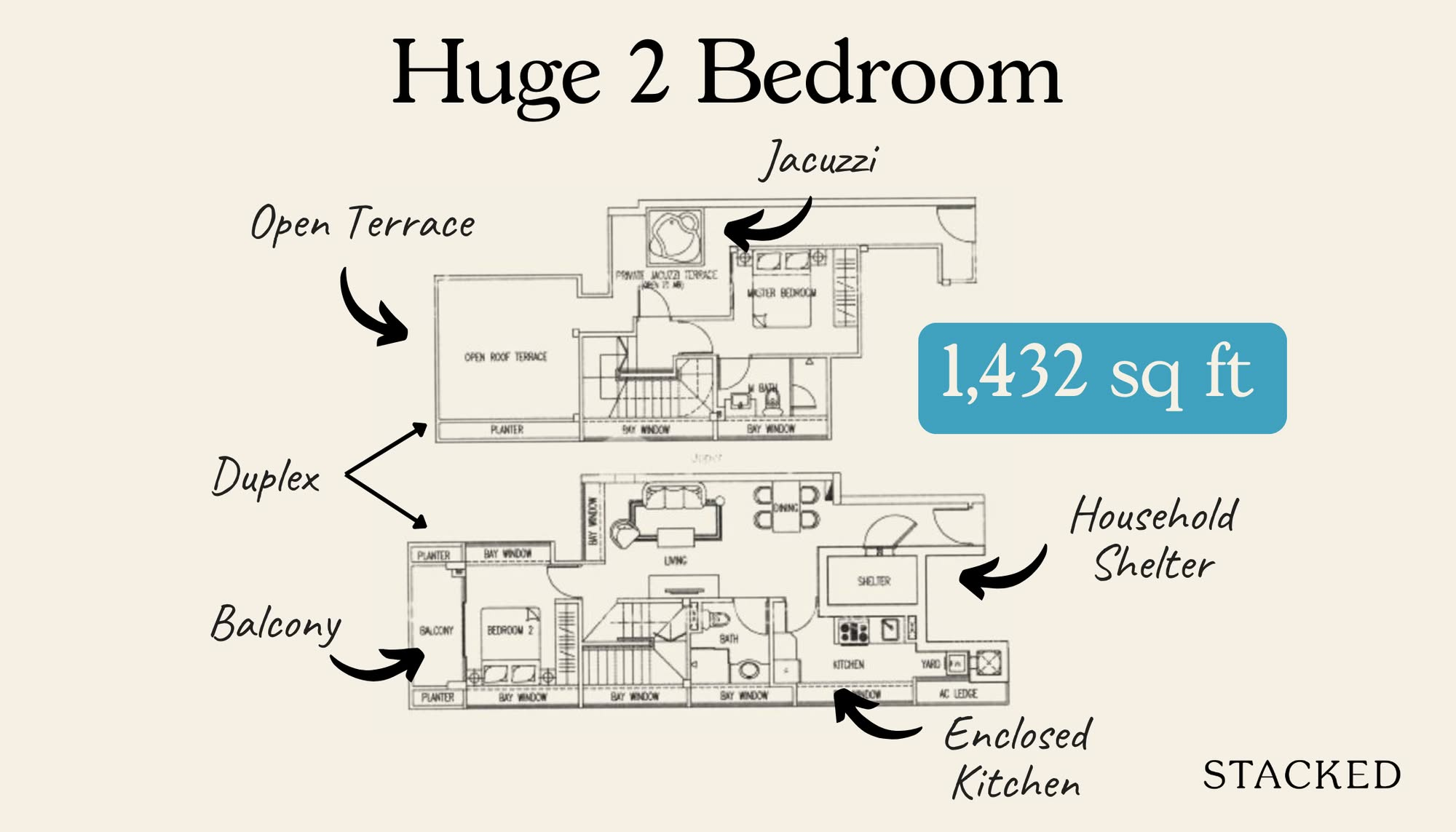
Property Picks Here’s Where You Can Find The Biggest Two-Bedder Condos Under $1.8 Million In 2025
Latest Posts

Property Advice Should We Buy An Old 99-Year Leasehold Condo To Live In: Will It’s Value Fall When The Lease Runs Out?

Pro How A Once “Ulu” Condo Launched In 1997 Became A Top Performer

New Launch Condo Analysis I Reviewed A New Launch 4-Bedroom Penthouse At Beauty World

Property Market Commentary When Renting In Singapore Is The Smarter Move — And Buying Can Wait

Landed Home Tours Why Singaporean Families Are Looking At This Landed Enclave From Around $4M

Singapore Property News Lentor’s First Condo Is Complete — The Early Profits May Surprise You

Property Market Commentary A Wave Of New HDB Resale Supply Is Coming In 2026: Here’s Where To Find Them

Property Advice We Own A $800K 1-Bedder And A $1.1M 3-Bedder: Is It Possible To Upgrade To A 4-Bedder Condo?

On The Market These Are Some Of The Cheapest 5-Room HDB Flats Left In Central Singapore

Pro This 698-Unit Ang Mo Kio Condo Launched At The Wrong Time — And Still Outperformed Peers

Singapore Property News $281.2M in Singapore Shophouse Deals in 2H2025 — But That Number Doesn’t Tell the Full Story

Property Market Commentary 5 Key Features Buyers Should Expect in 2026 New Launch Condos

Editor's Pick What “Lucky” Singaporean Homebuyers Used To Get Away With — That You Can’t Today

Property Investment Insights These Resale Condos In Singapore Were The Top Performers In 2025 — And Not All Were Obvious Winners

Singapore Property News CapitaLand–UOL’s $1.5 Billion Hougang Central Bid May Put Future Prices Above $2,500 PSF


